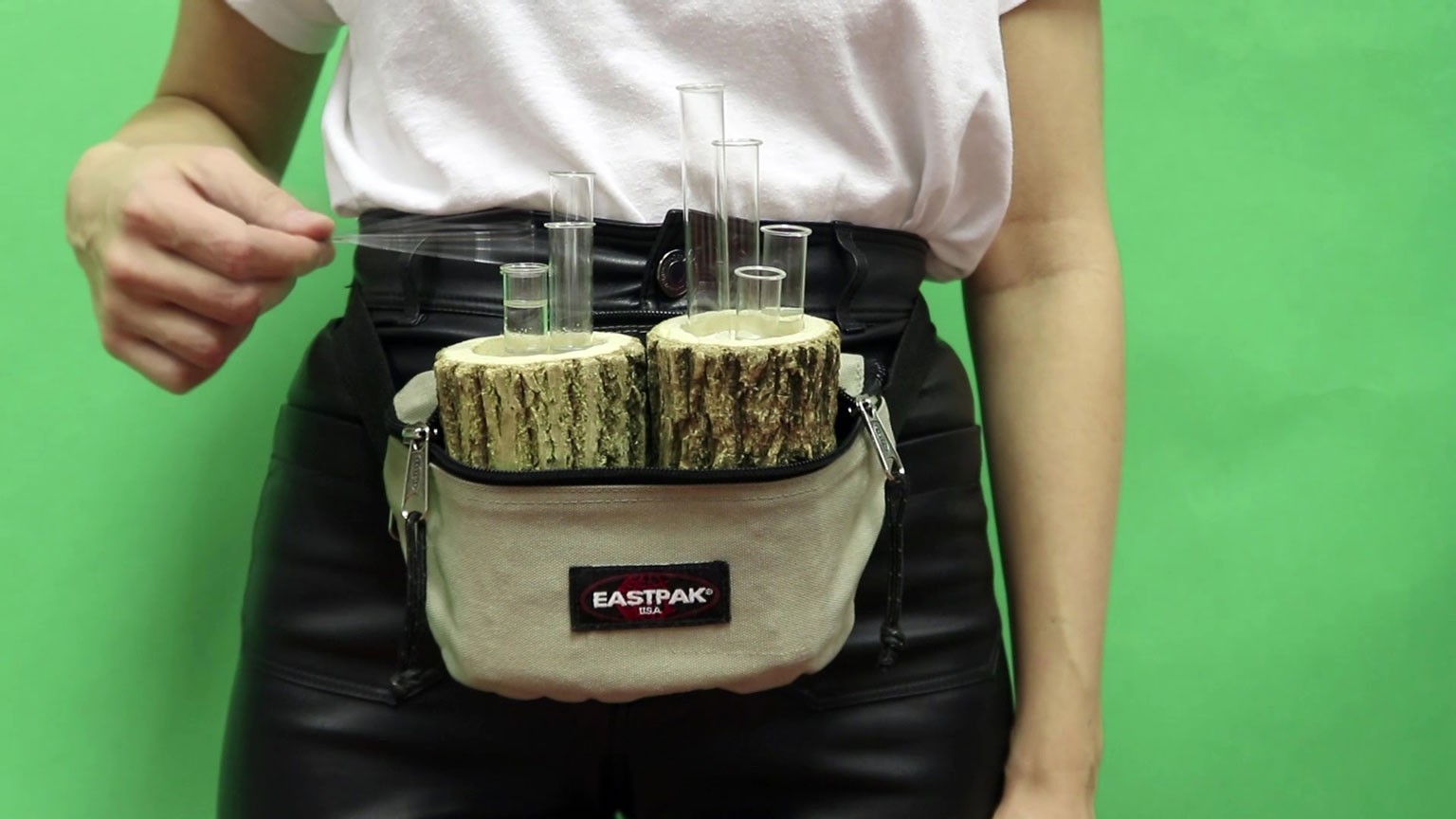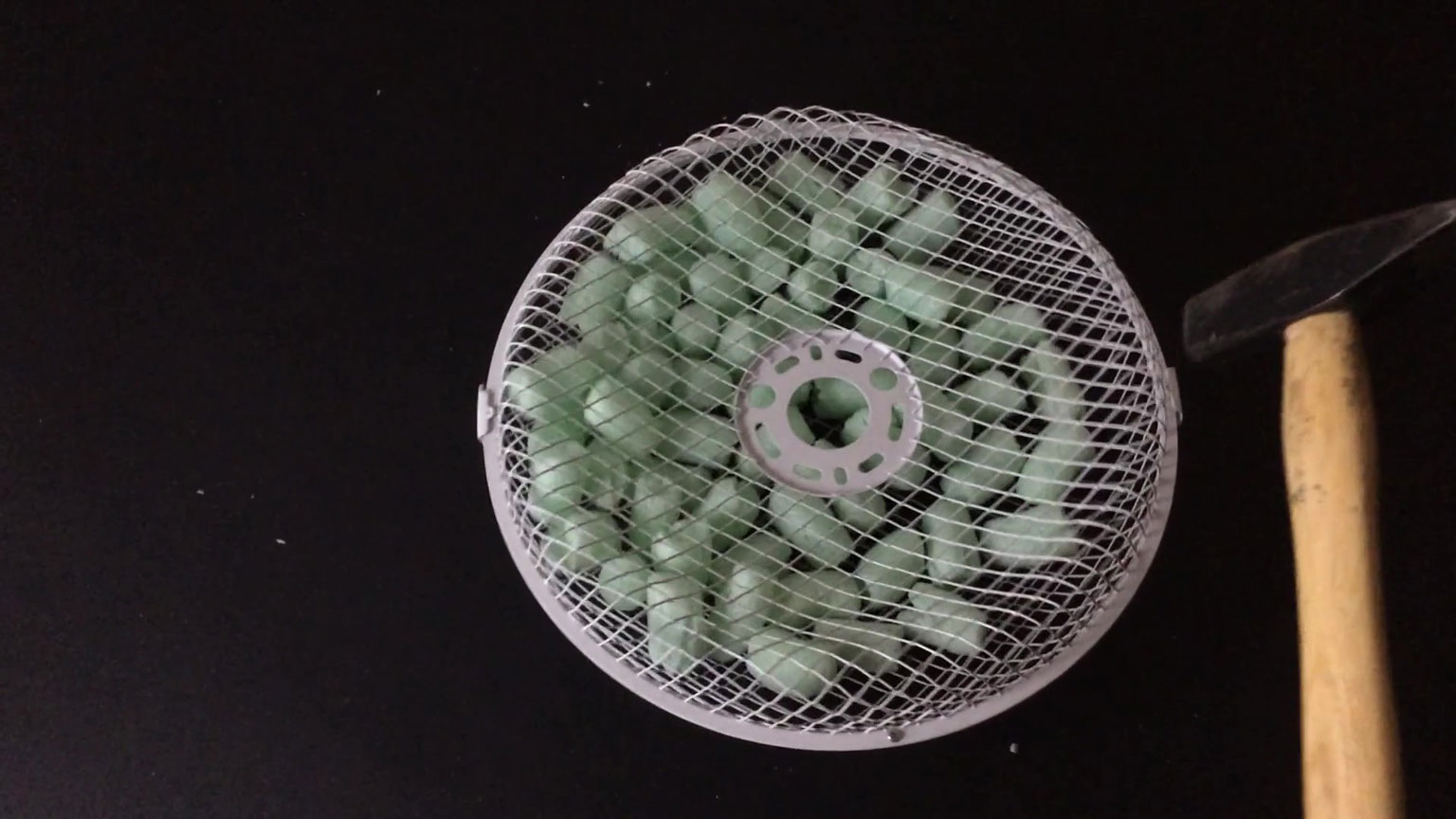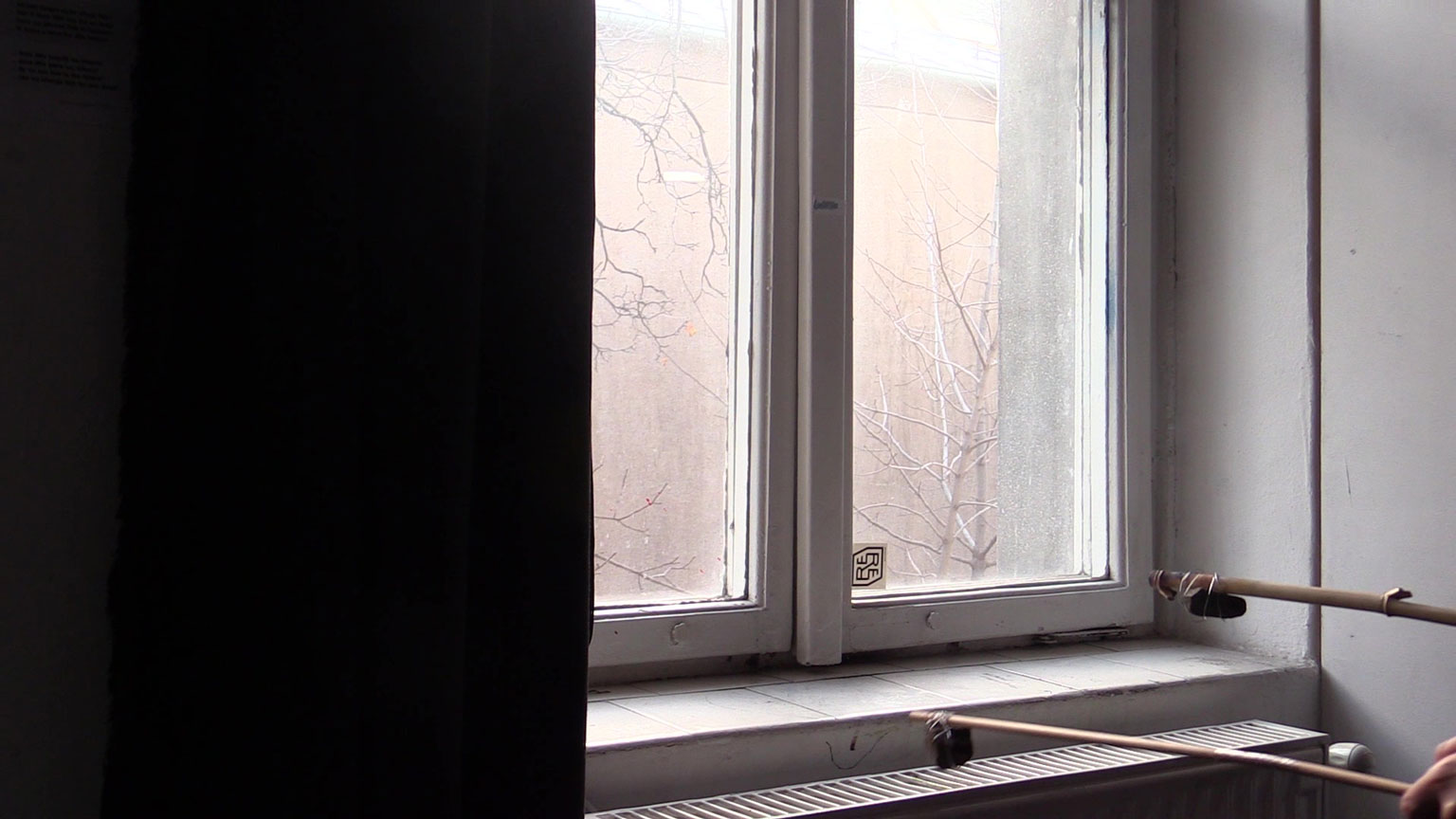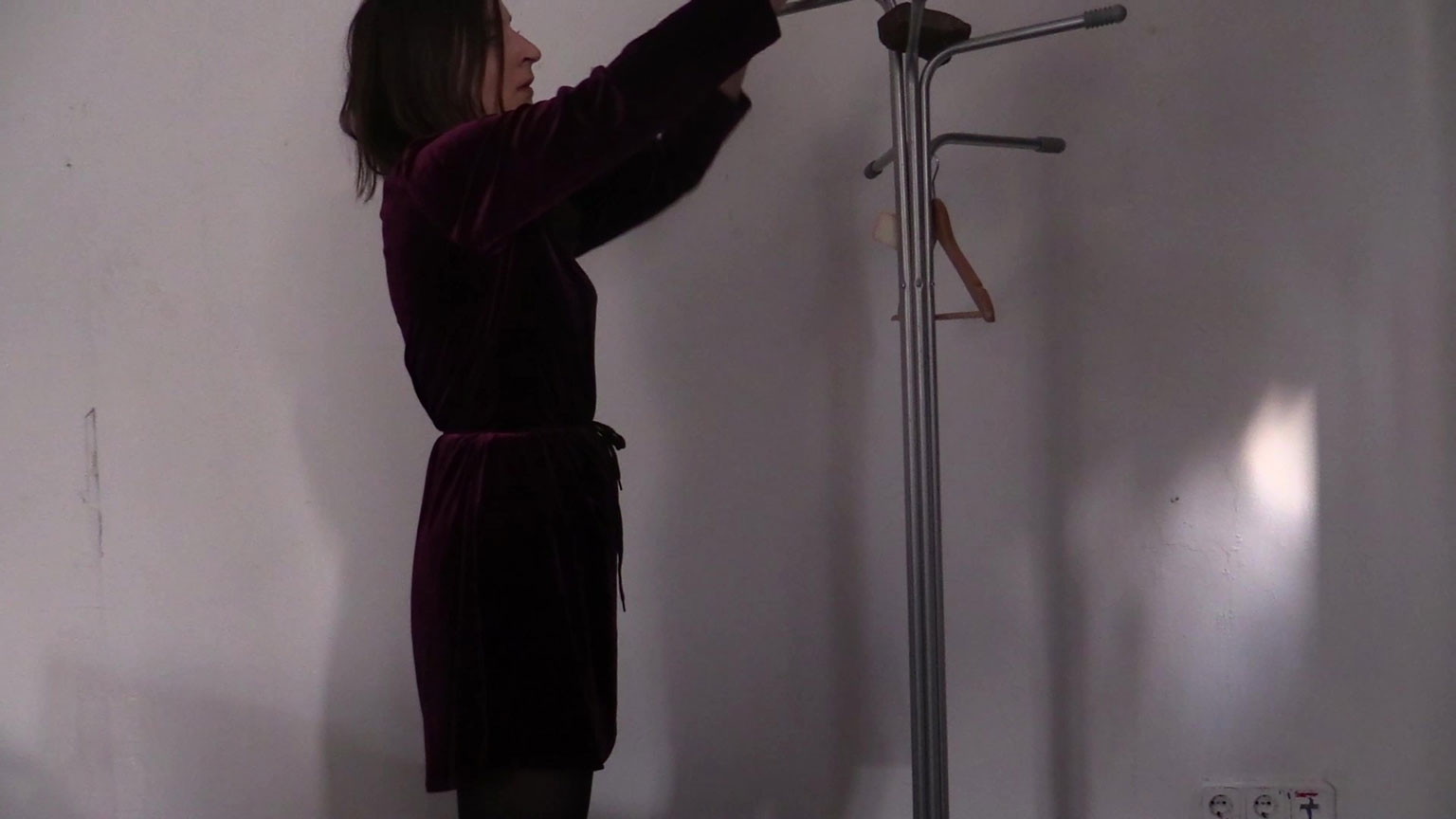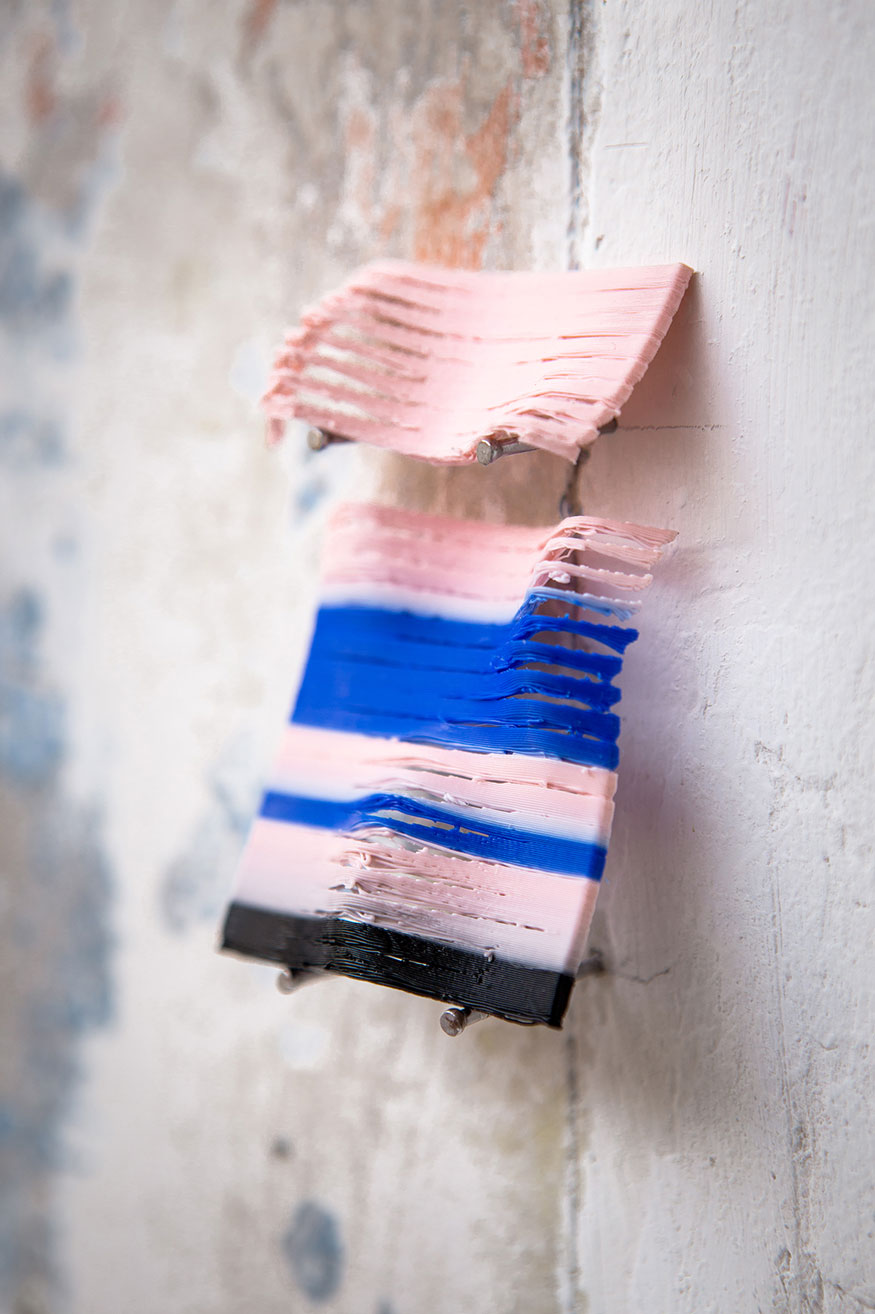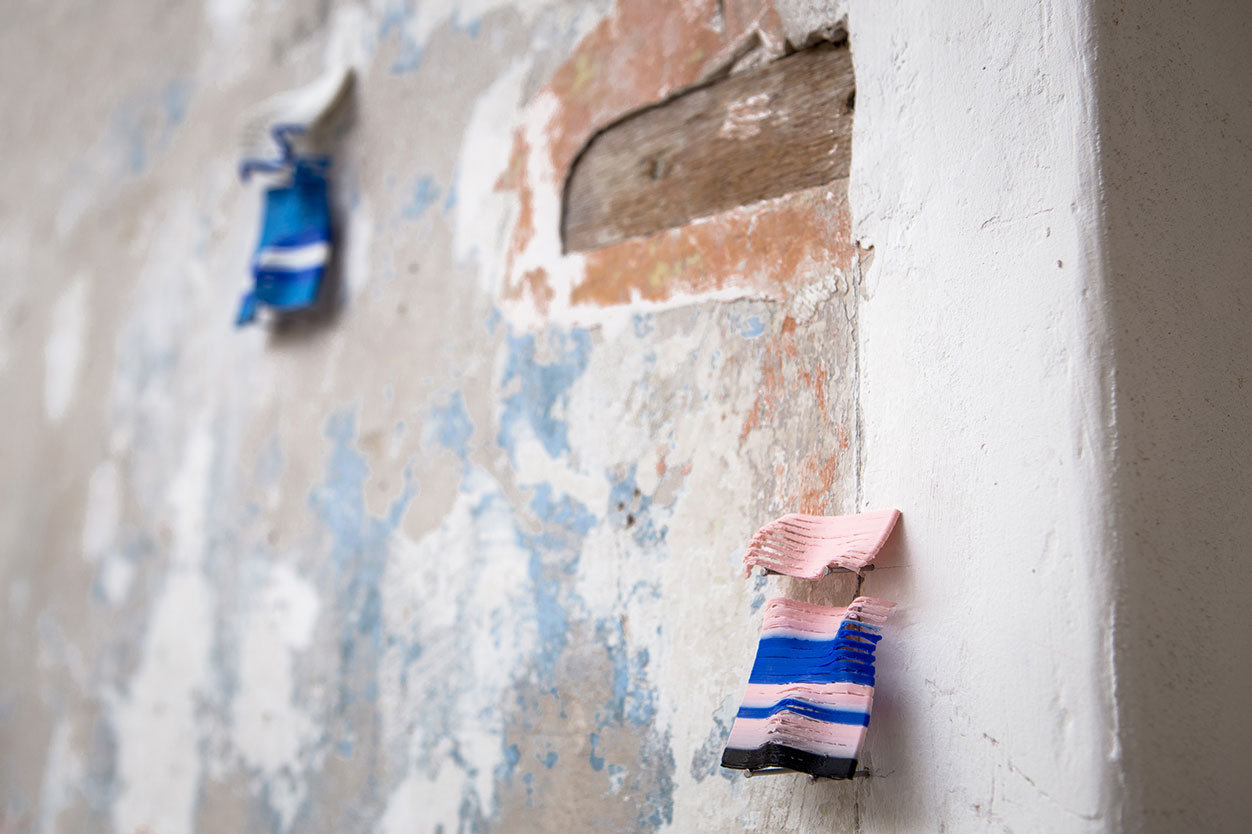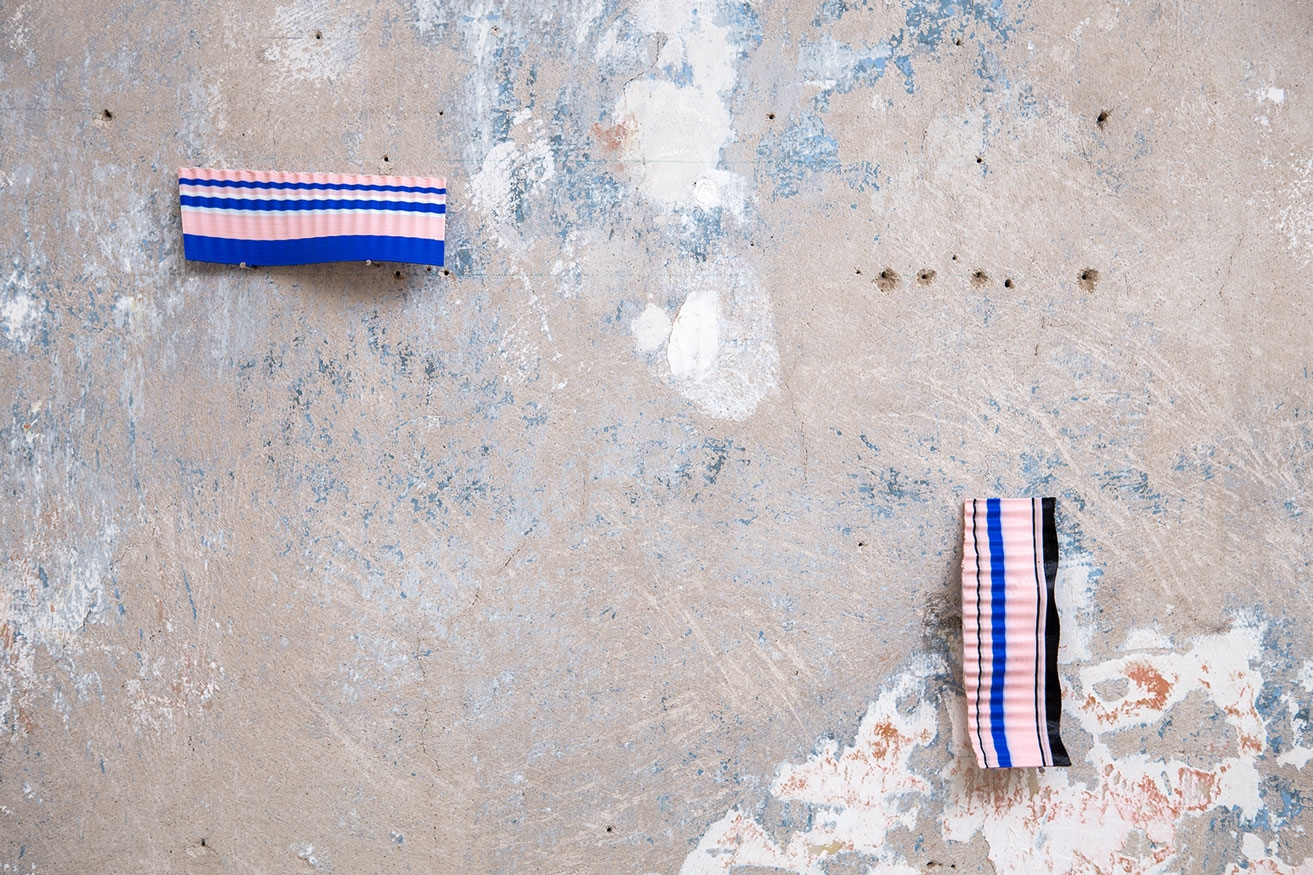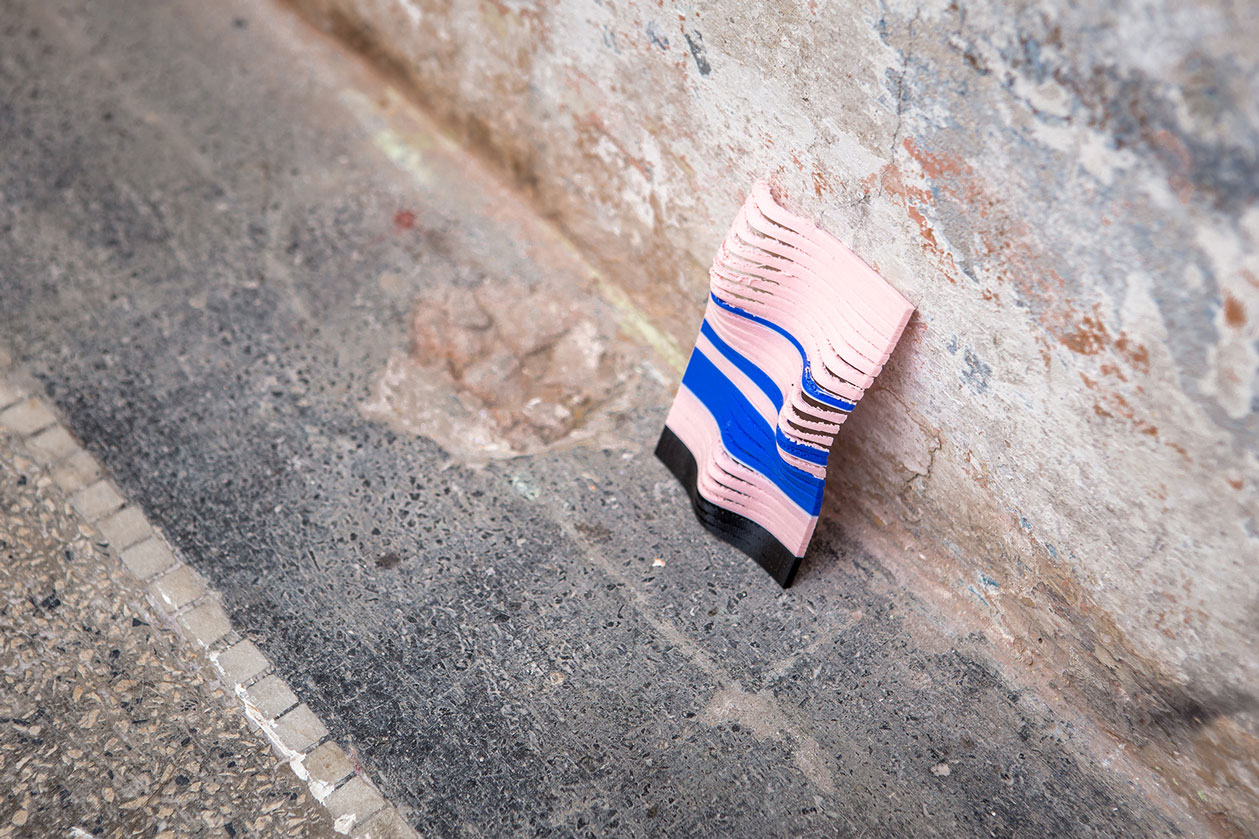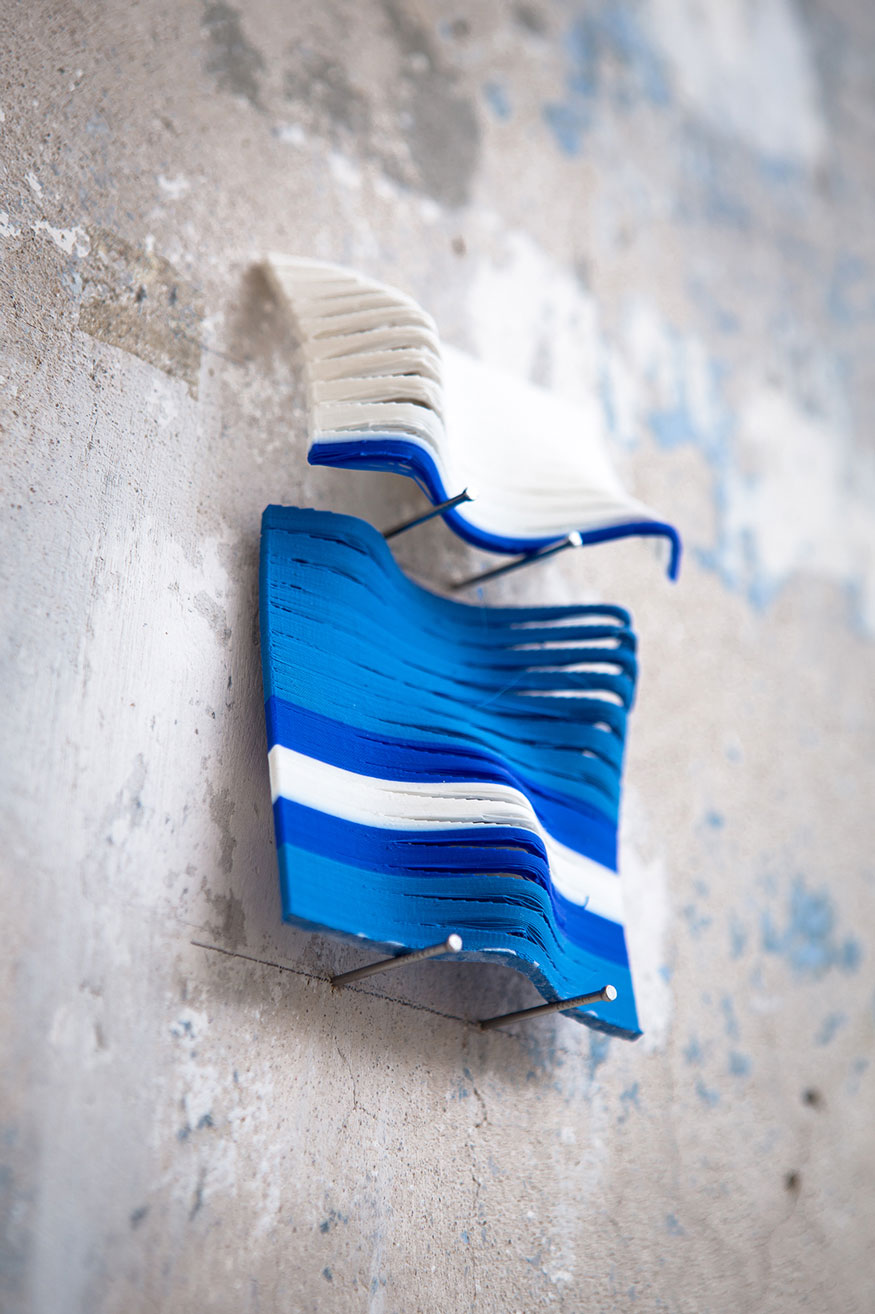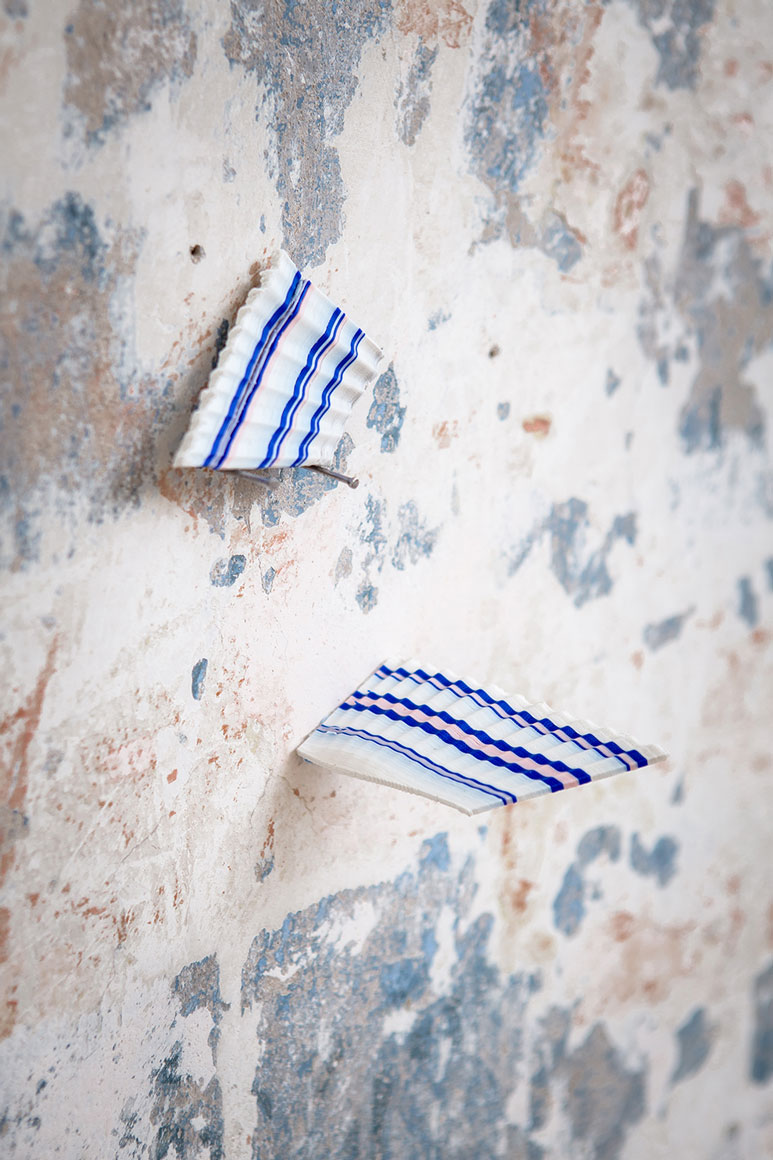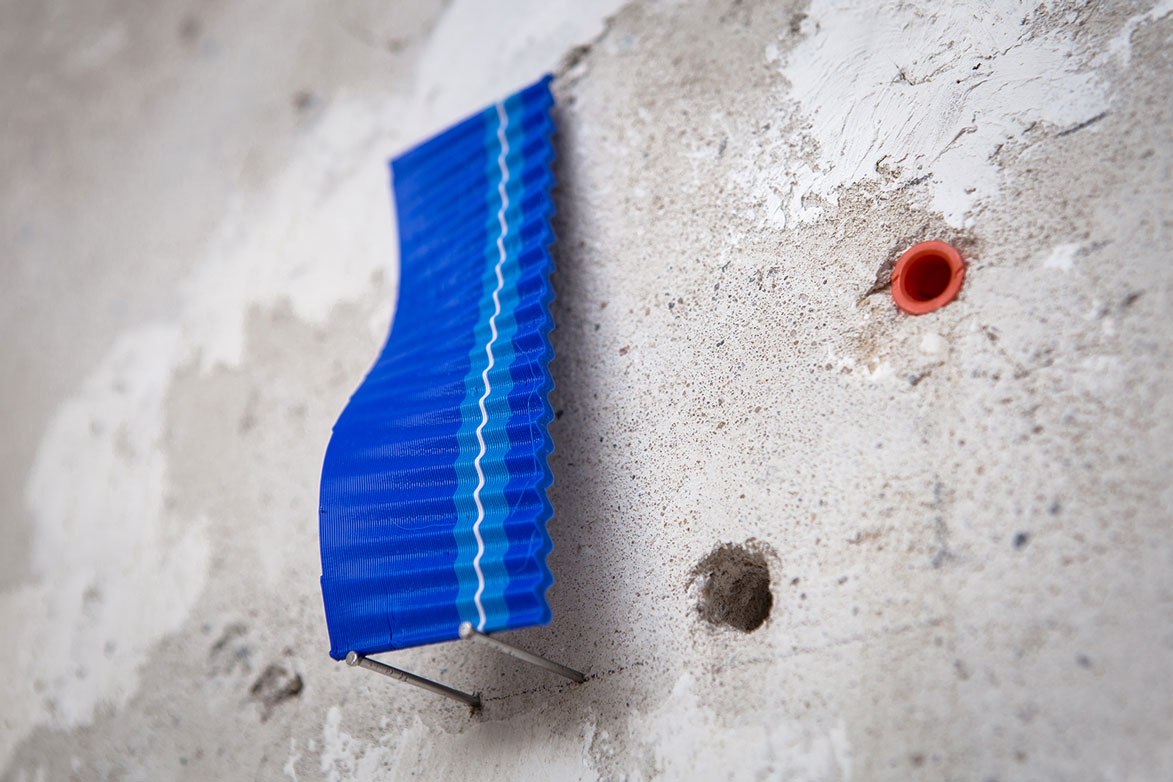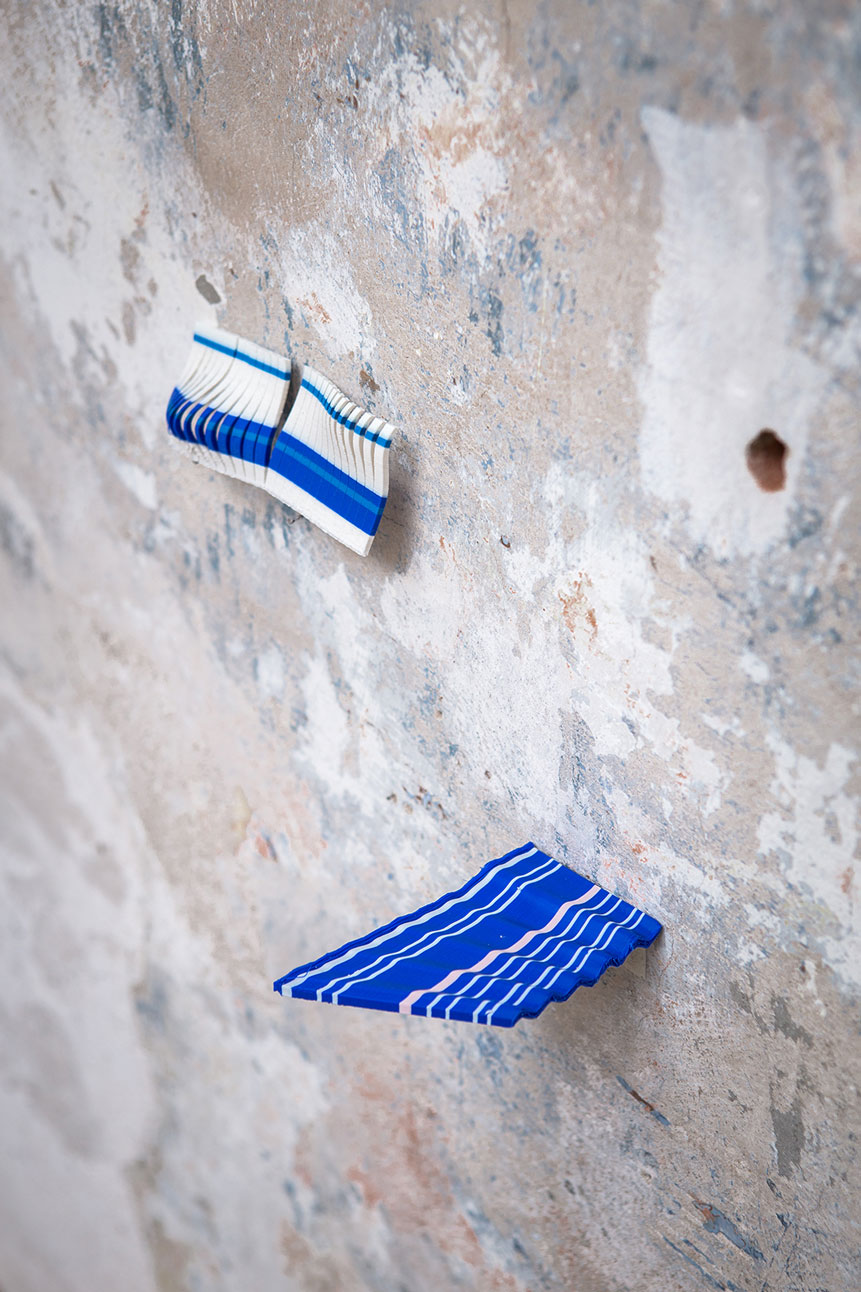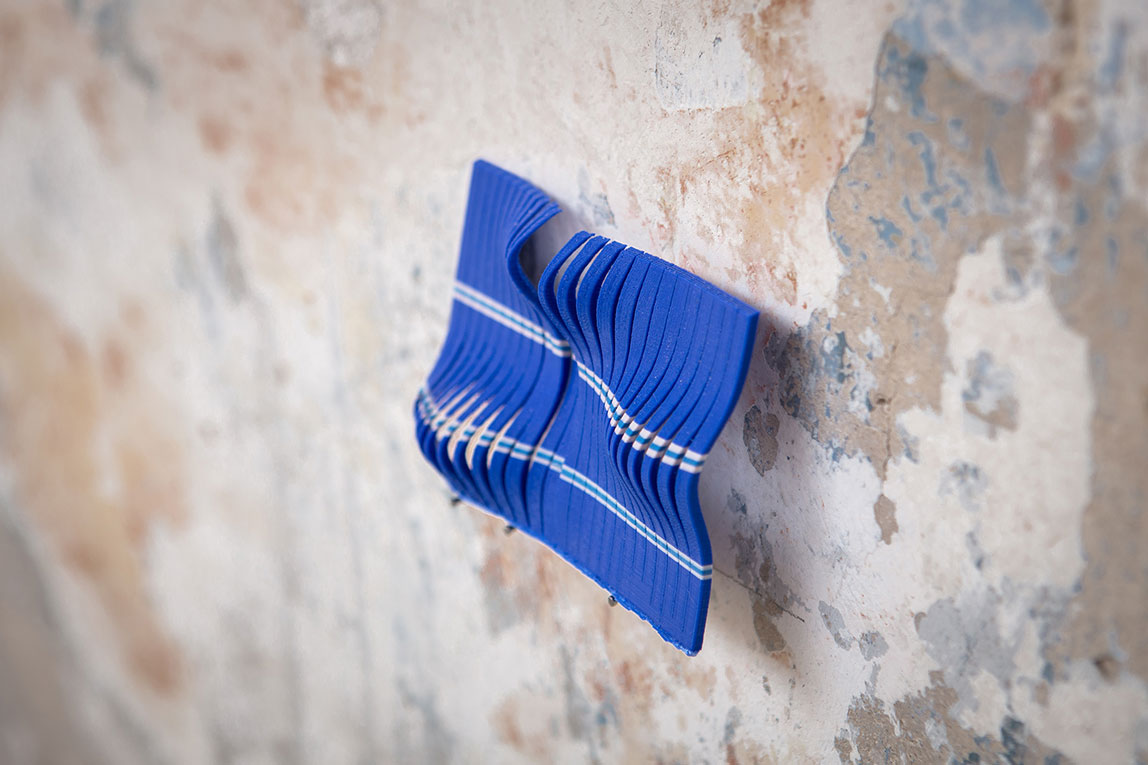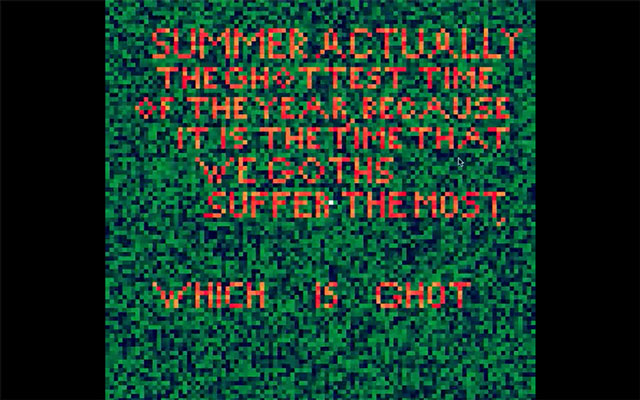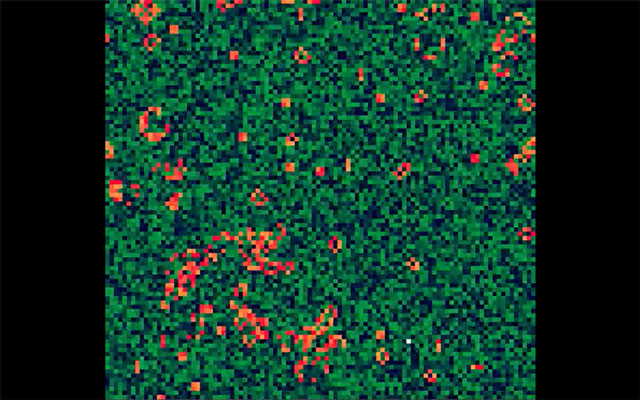off site installations
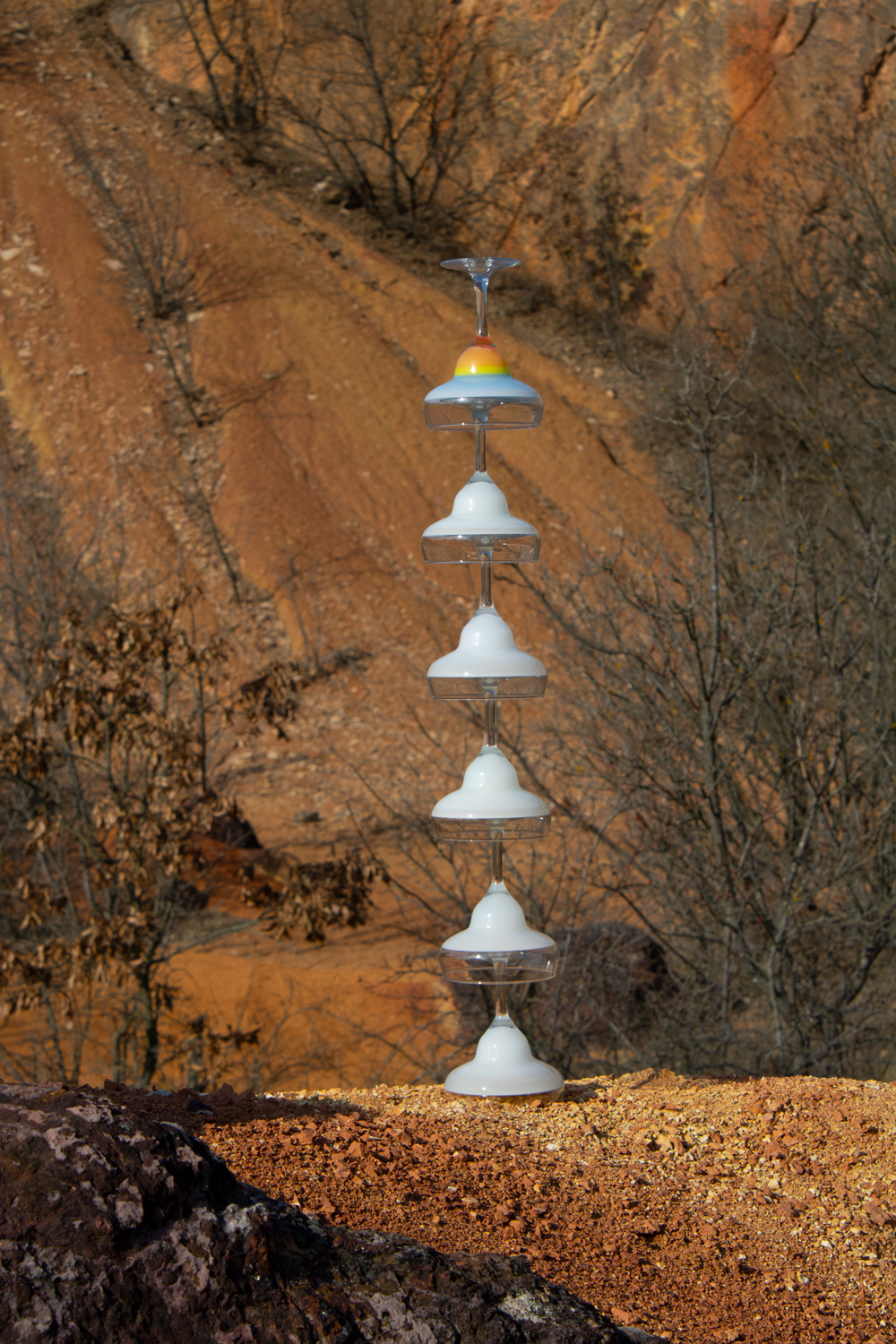
'a delicate monolith'
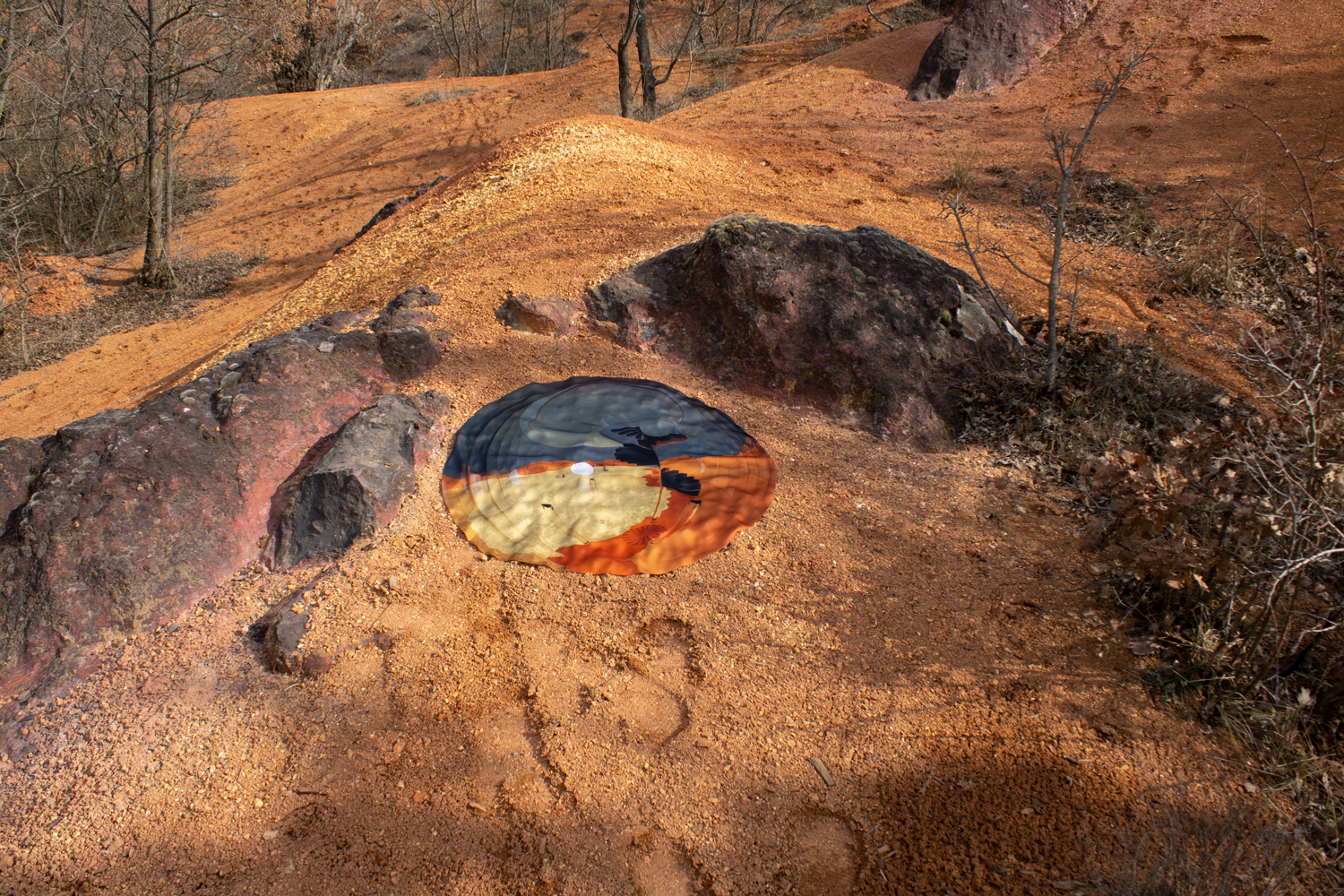
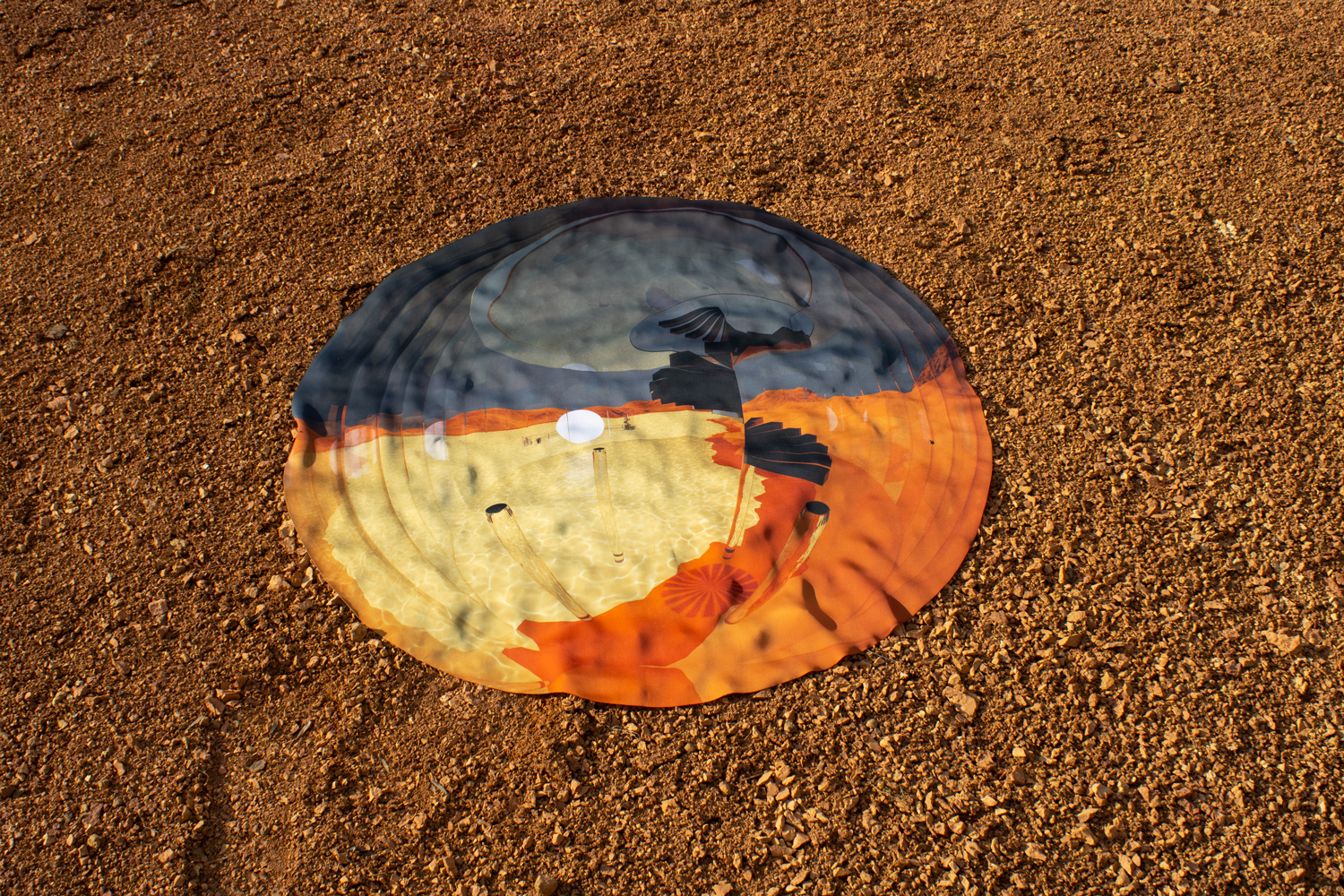
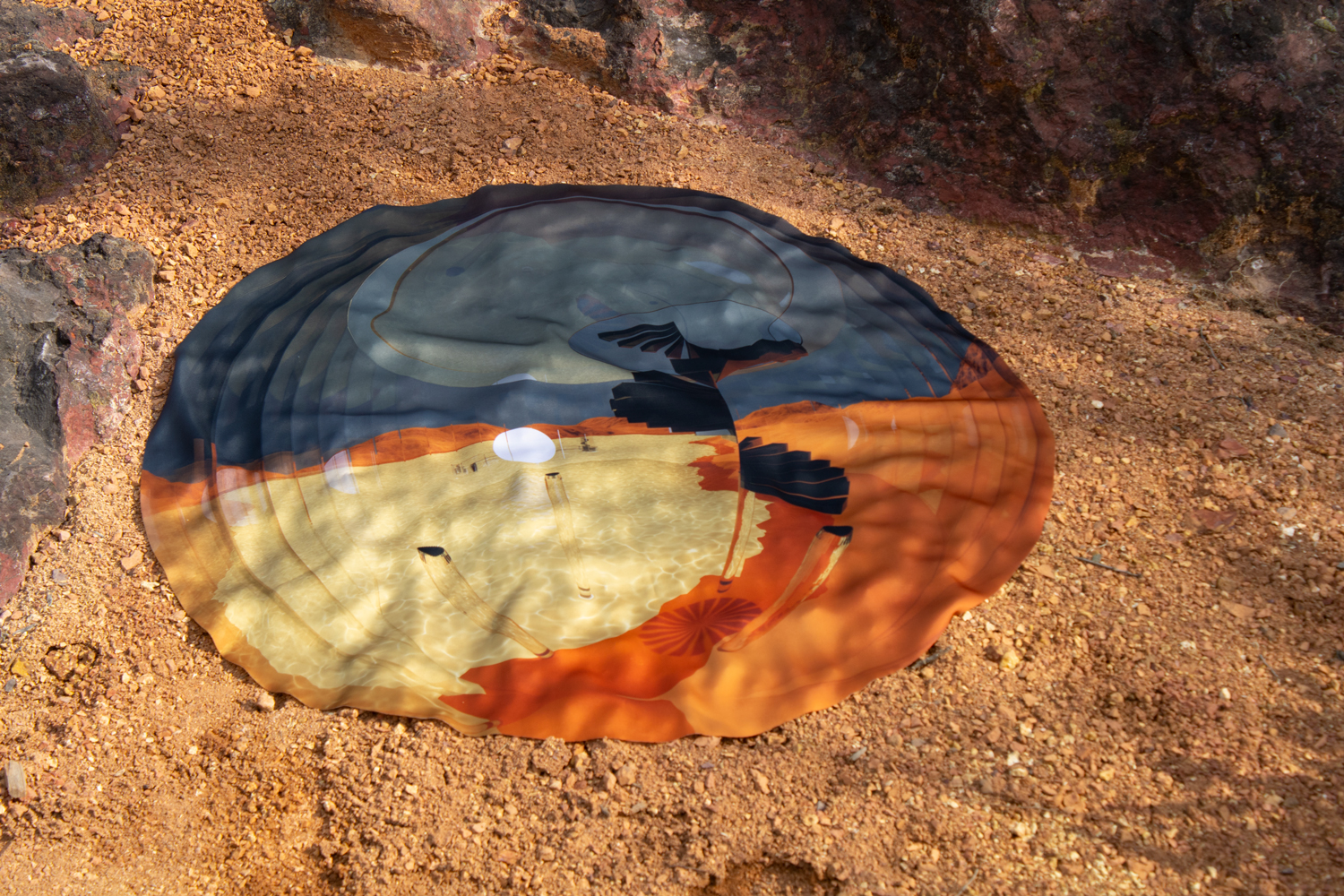
textile print from flatlines 34. episode, 83 cm



textile print from flatlines 33. episode, 147 x 220 cm


textile print from flatlines 33. episode, 147 x 147 cm
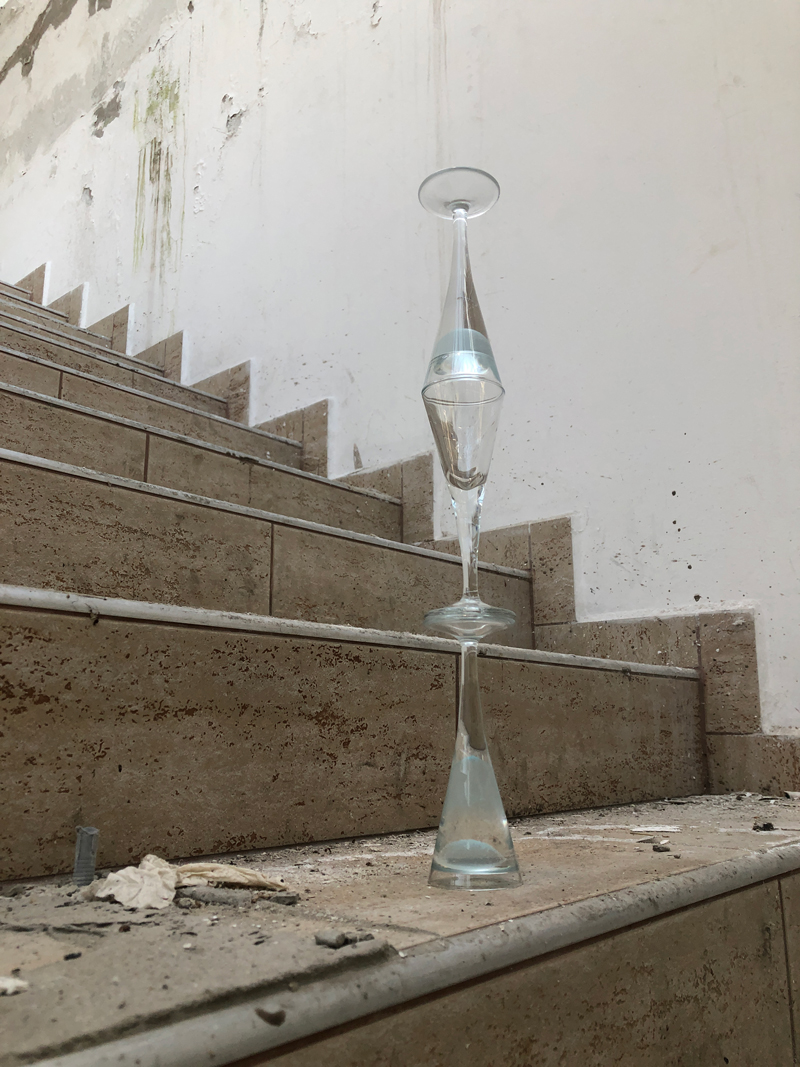
'kaili blues (offering)'
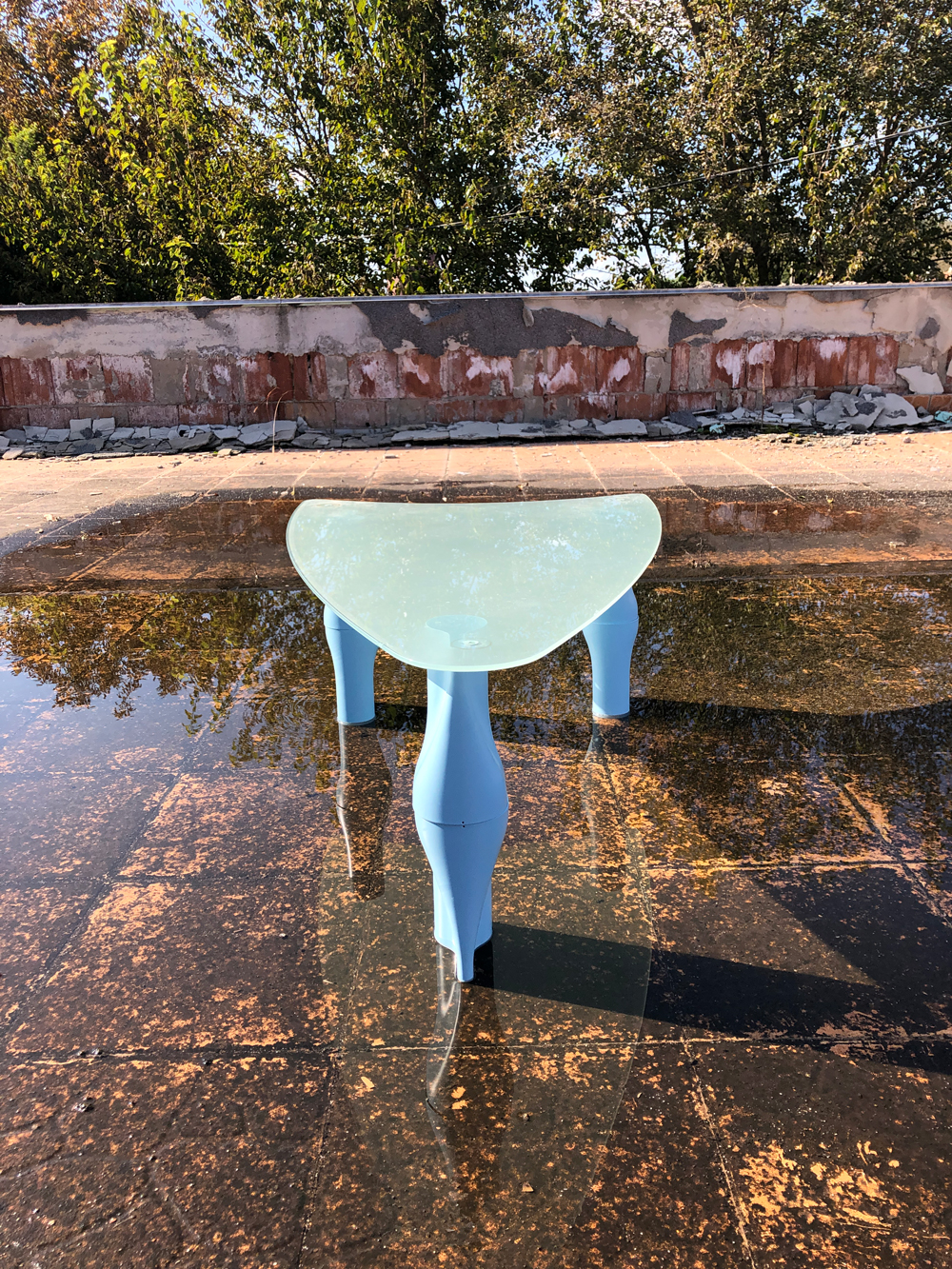
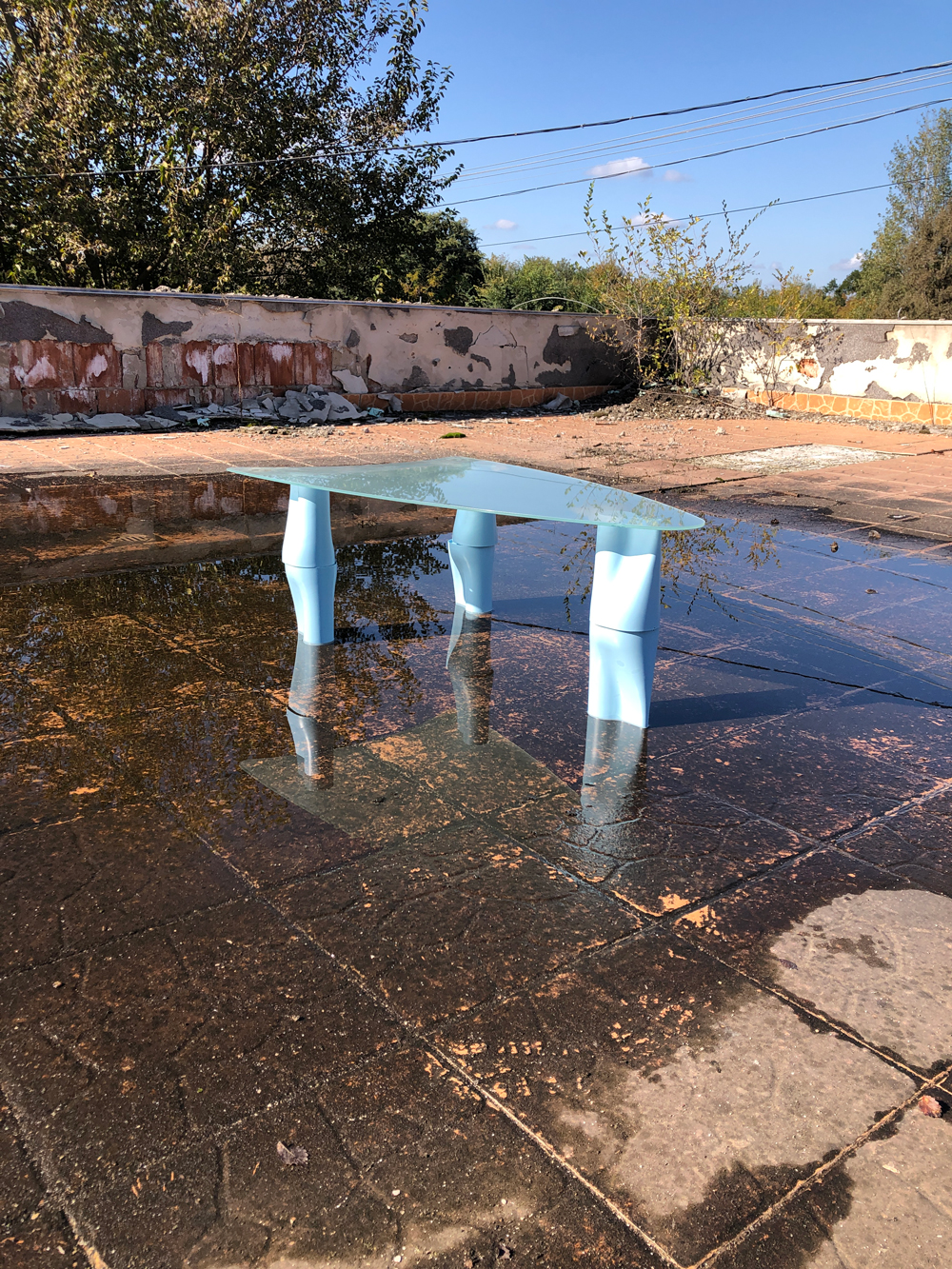
'kaili blues (altar)'
various sites
I like to install my artworks in found spaces, off spaces. I have a suspicion, a sense, that the atmosphere of the site and the works’ aura are strengthened by the surroundings, almost like they are having a silent conversation in the background. The installation gives another layer of meaning for the interpretation.
As it would be a perfect exhibition.
sculptural works
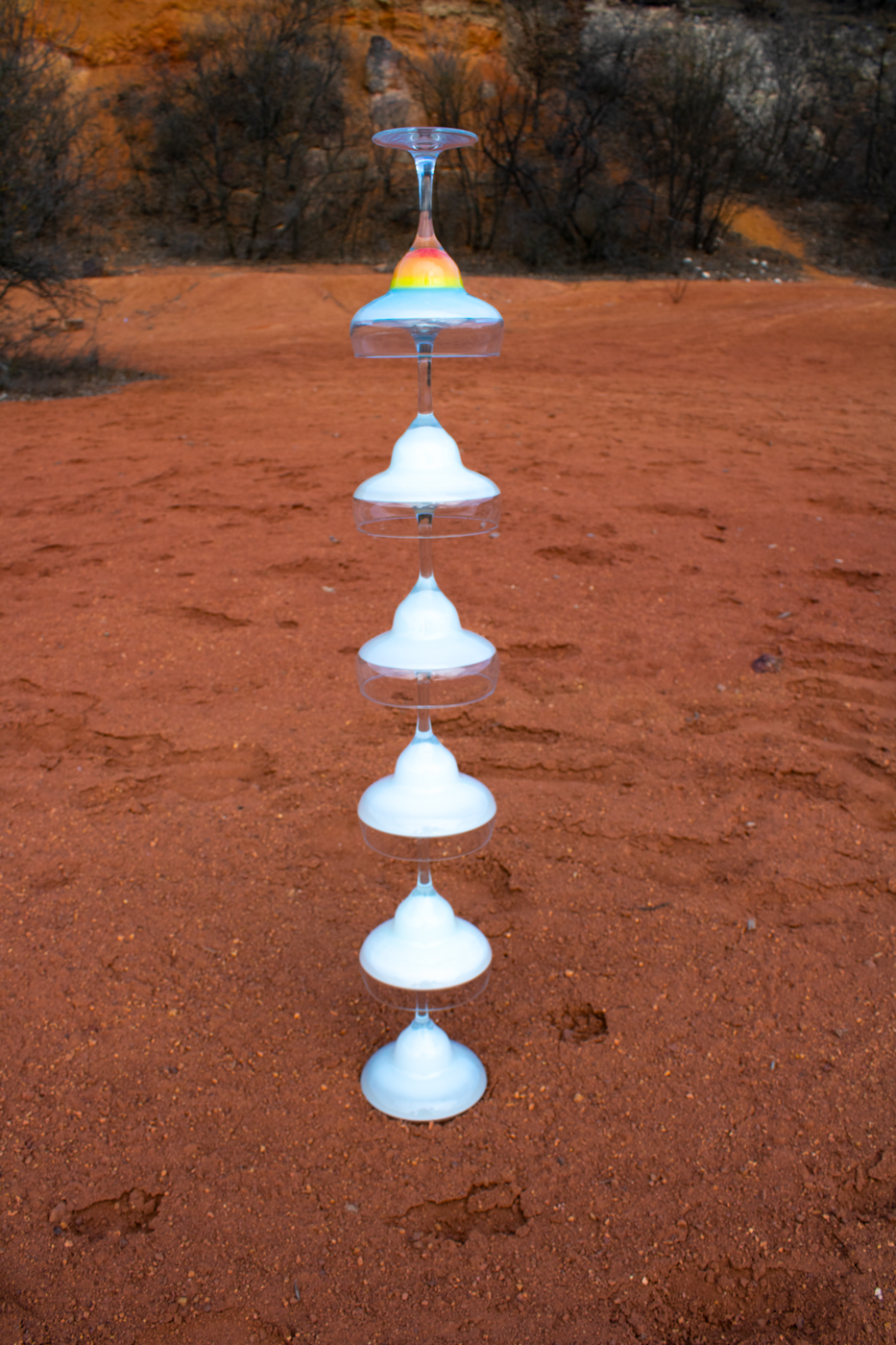
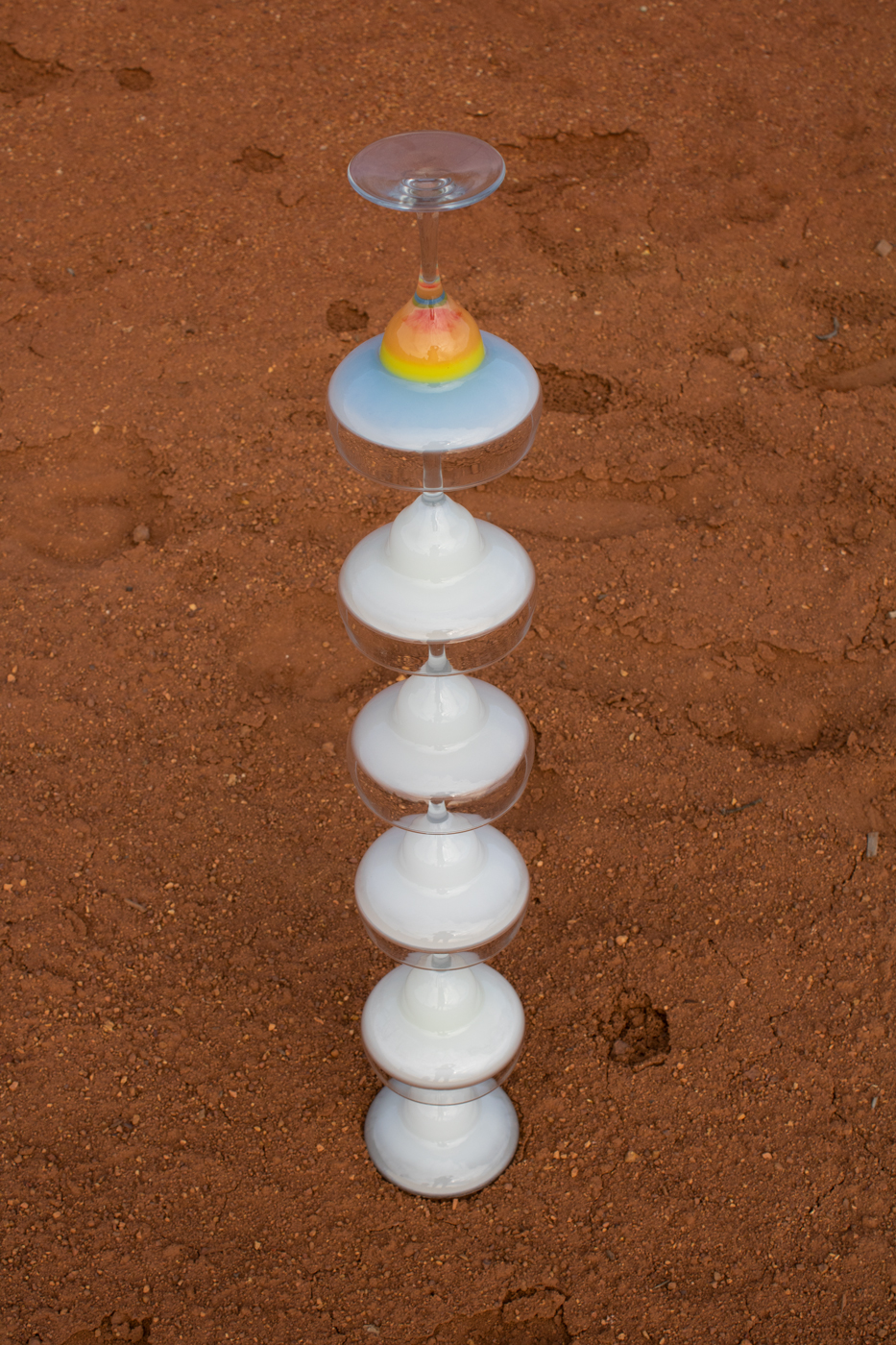
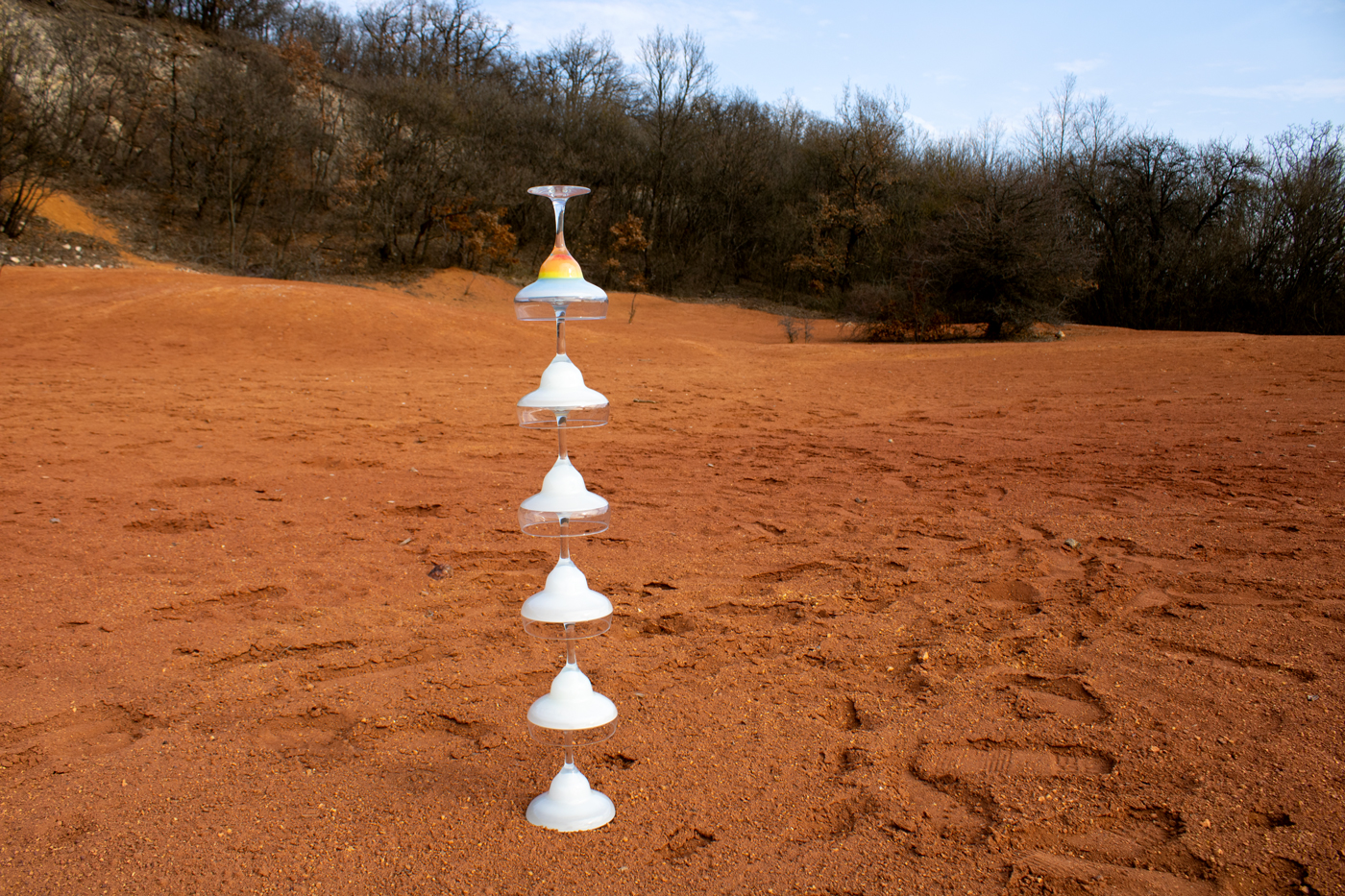
'a delicate monolith'
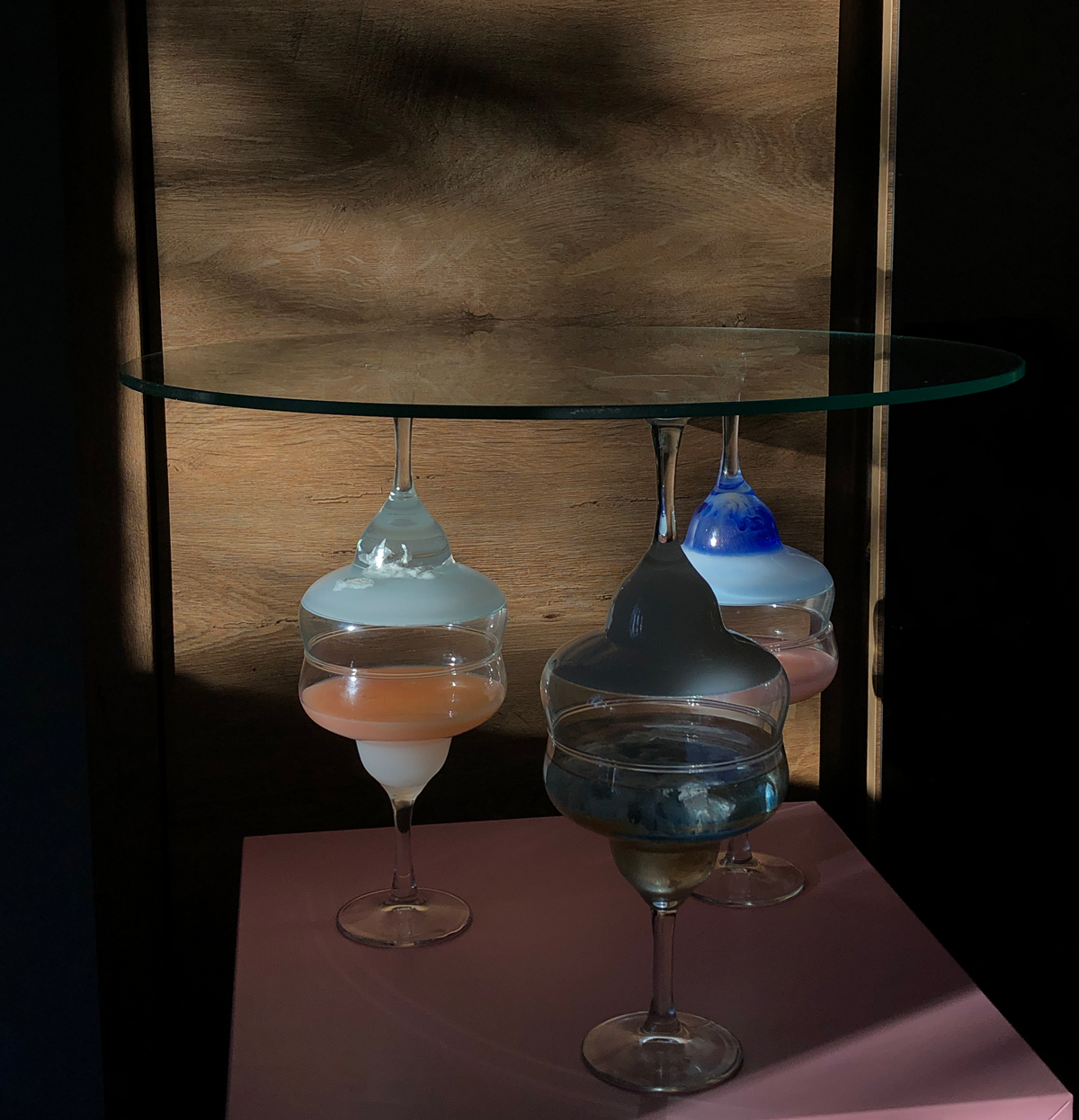
'sun sets (luca chair)'

'kaili blues (offering)'
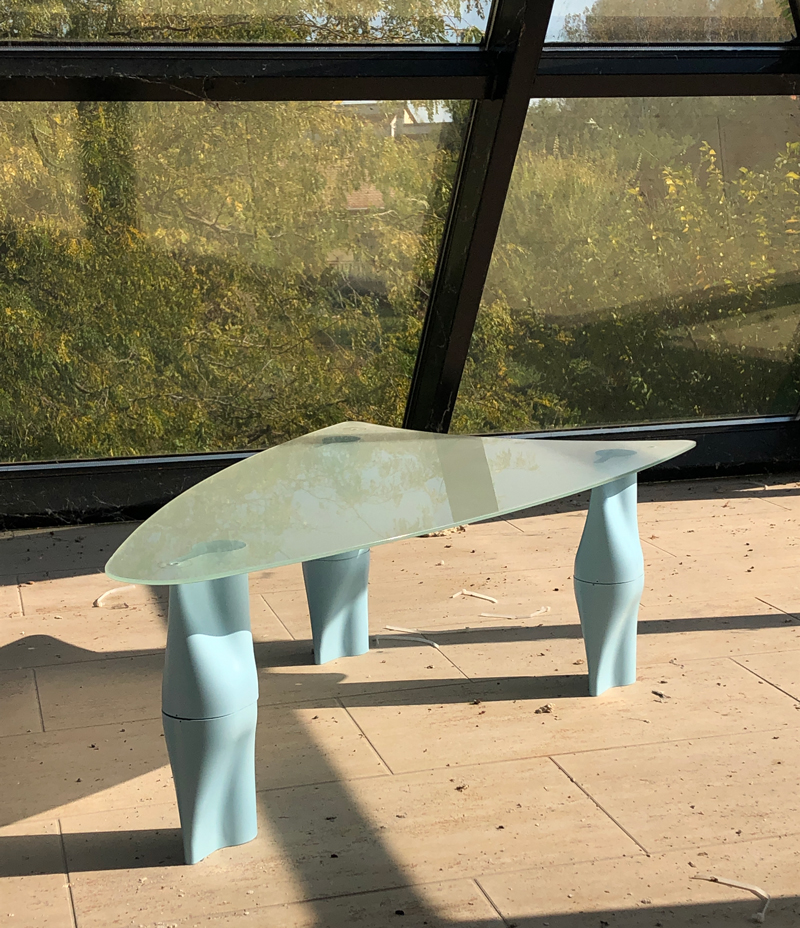
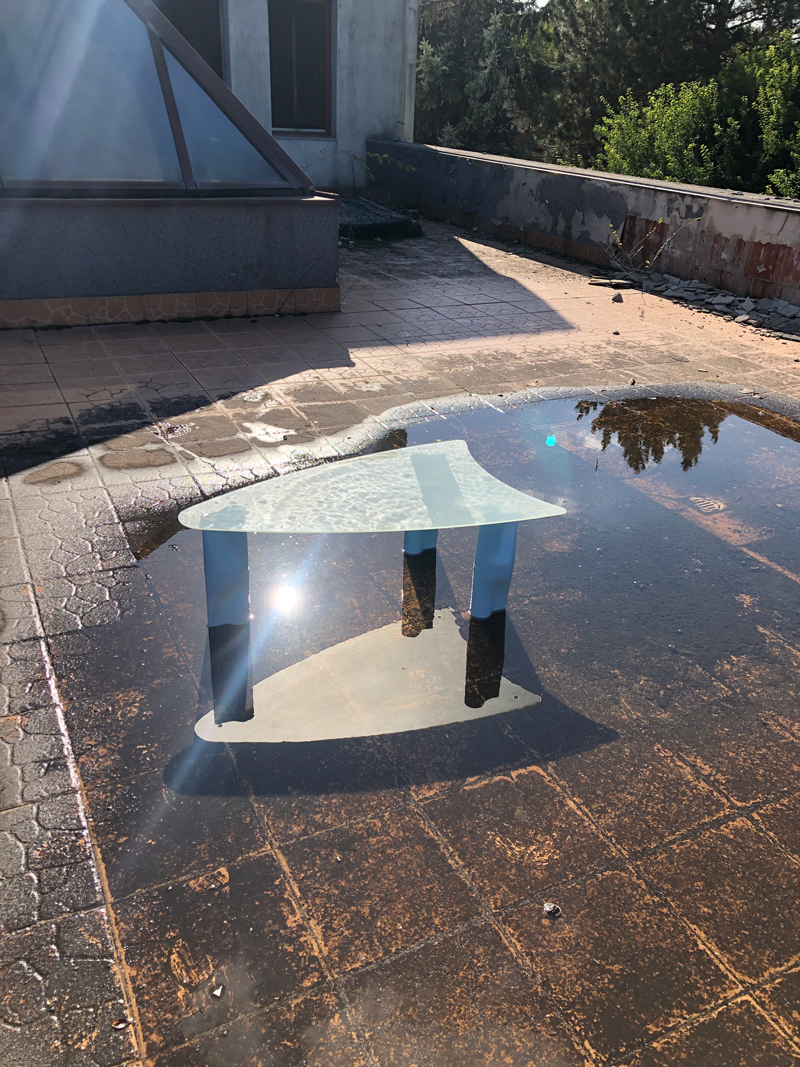
'kaili blues (altar)'
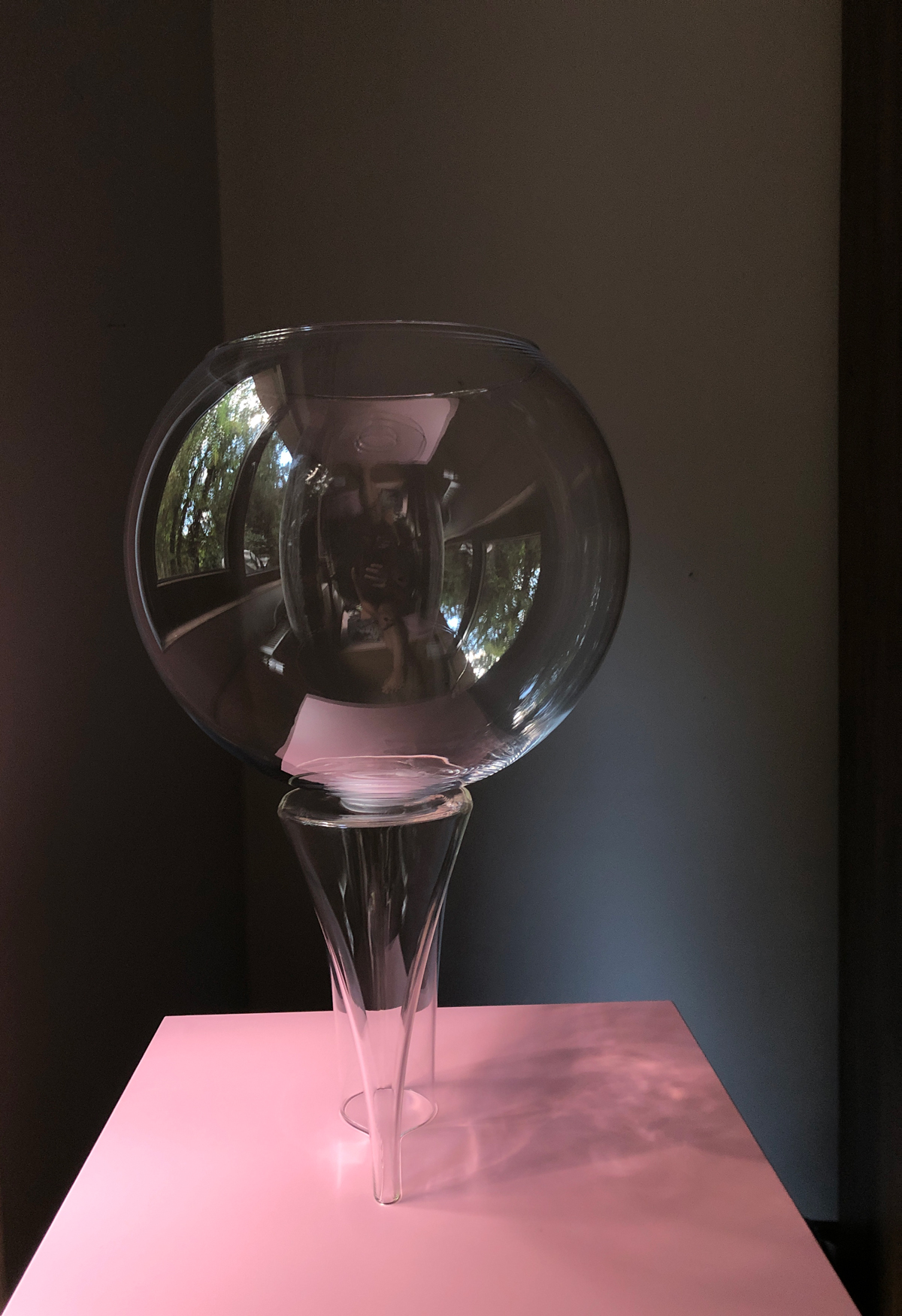
'alice's glass'
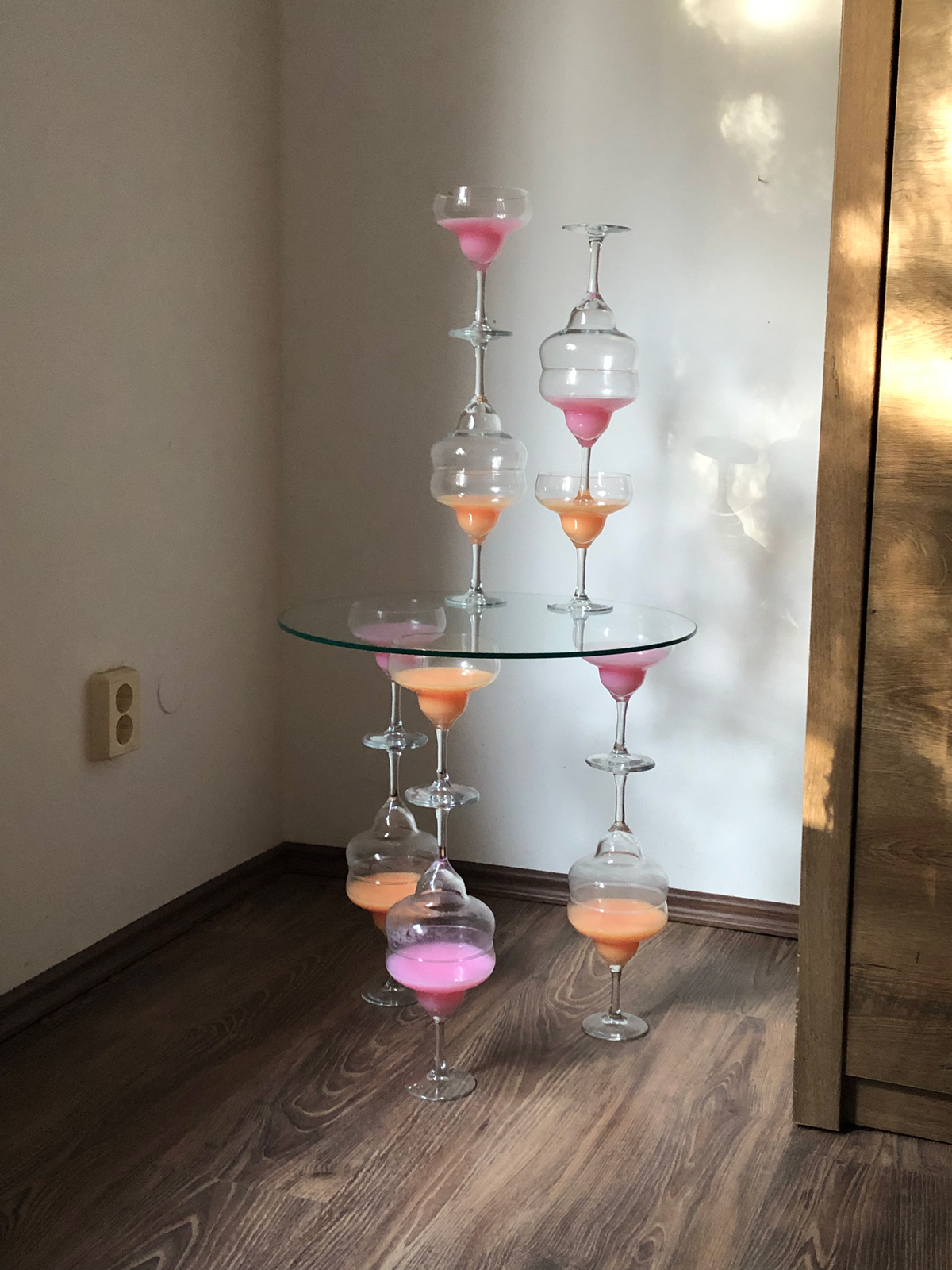
'rest in pieces, chair (sexy knees)'
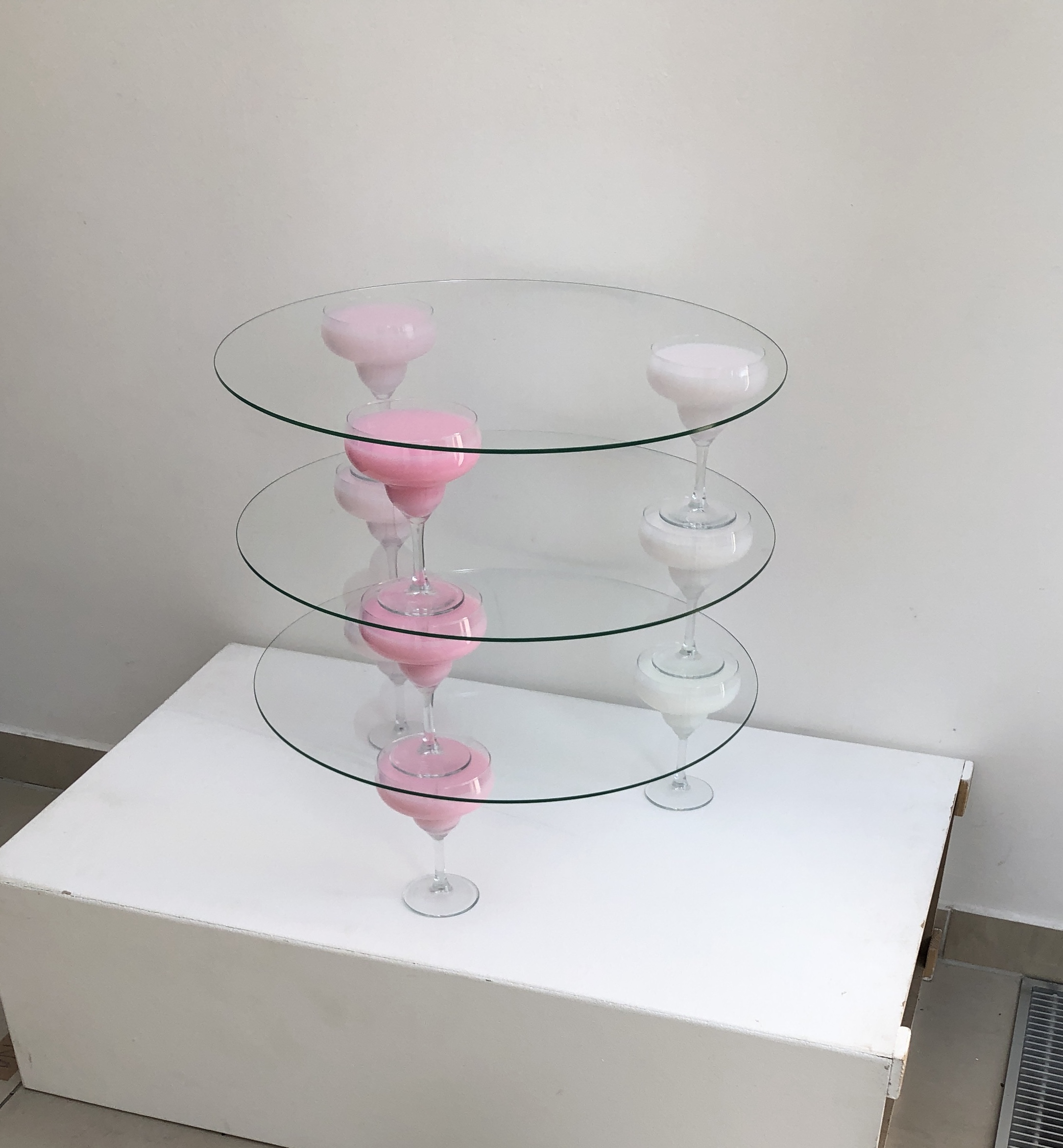
'rest in pieces, table (variations 3)'


'rest in pieces, table (variations 2)'
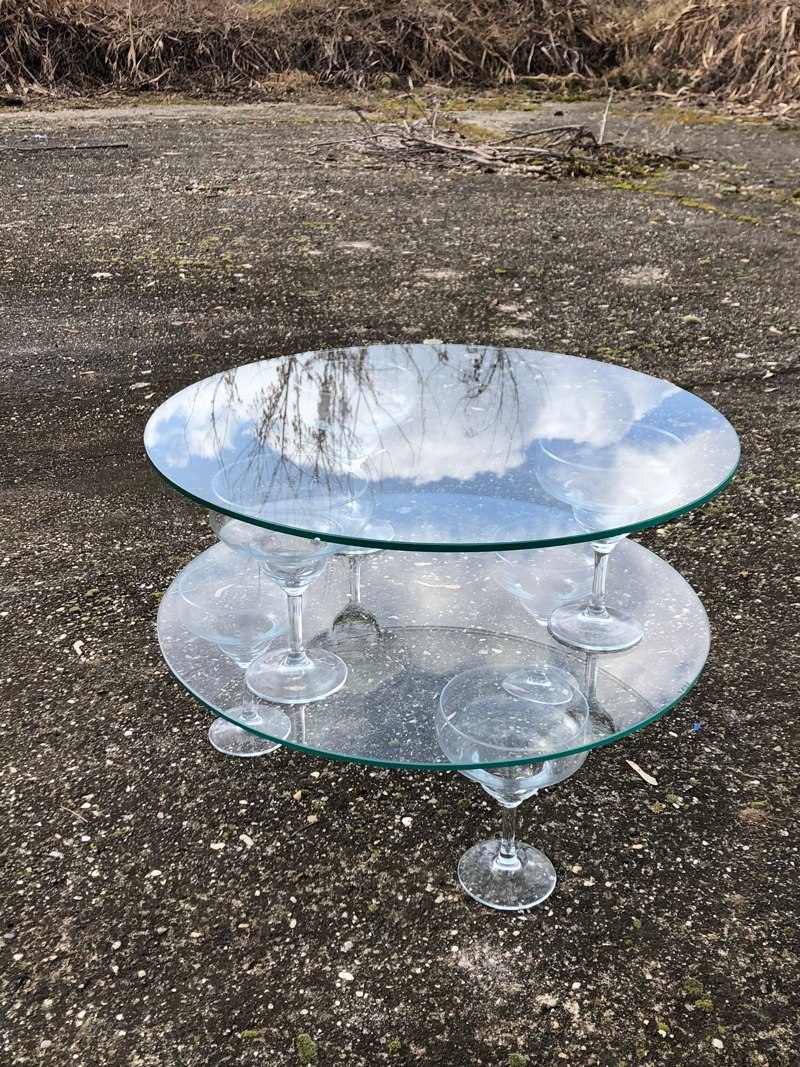
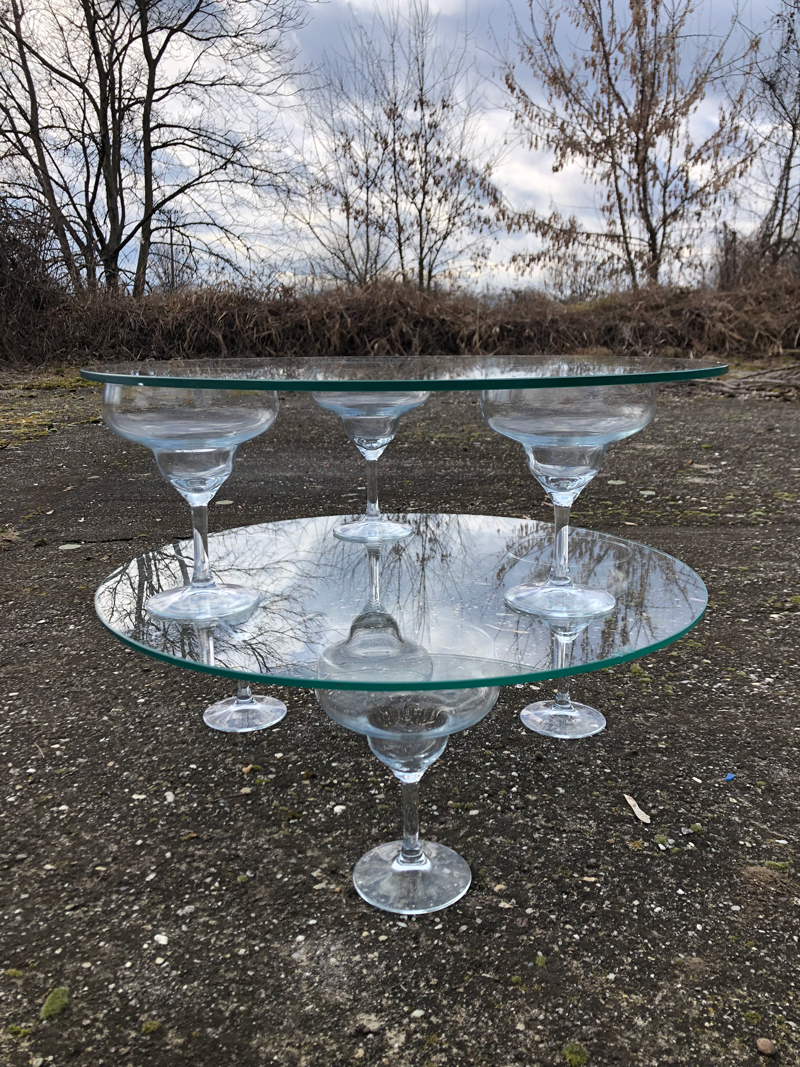
'rest in pieces, table (variations 1)'
flatlines, sleep happens

'-sleep happens'


'rest in piece'


'future used to be'

'-missed you'


'rest in pieces'


'-pop crimes'

curated by: Natálie Kubíková, Mia Milgrom
Garage Gallery presents the work of an emerging Hungarian artist Anna Hoóz, whose residency was supported by an exchange residency programme with Budapest Gallery.
The Flatlines series is concerned with invention of it's own millieu.
Anna Hoóz (*1991) is a multimedia artist based in Budapest, Hungary. In her works she plays with the imaginativeness of digital forms. The exhibition "sleep happens" is a non-linear, dreamlike story in which Anna blurs historical themes and revives old myths. Formally, she is inspired by relief textures, which are then translated into two-dimensional forms on fine satin fabrics or rough sails. Here we can observe a strongly aesthetic fragmentation of realistic, visually exaggerated objects and their digital environments.
Central to the exhibition is a large image with a symbolic motif that continues to expand within the themes of the smaller fabric formats placed on the walls. There is an important aspect of playing with different sizes and details. The glass objects are filled with liquids and small format fabric prints, everything is carefully placed in order to enhance the reflections and transparency of the material. The fragmentary narrative, inspired by ancient myths and stories of the underworld, unfolds across an aesthetic landscape that feels fragile and rigid at the same time, as if with the wrong movement everything might come falling down, shattering like a mirror.
The dream-like worlds of Anna Hoóz function as a surreal navigation system, offering clues and patchy maps. Hoóz is introducing a new, reality-producing dimension as a signifier of the subconscious. The exhibited objects suggest a crossing of the dream state and reality. The tactility and familiarity allow a margarita glass to become a column and a lamp shade to turn into a small pool. All things appear different until you fall asleep.Depending on dimensions, temporal collision and the unfolding of pictorial narratives in the post digital era.
text by Mia Milgrom
Flatlines processes the afterlife of the three (axes/) planes.
flatlines, in medias rest
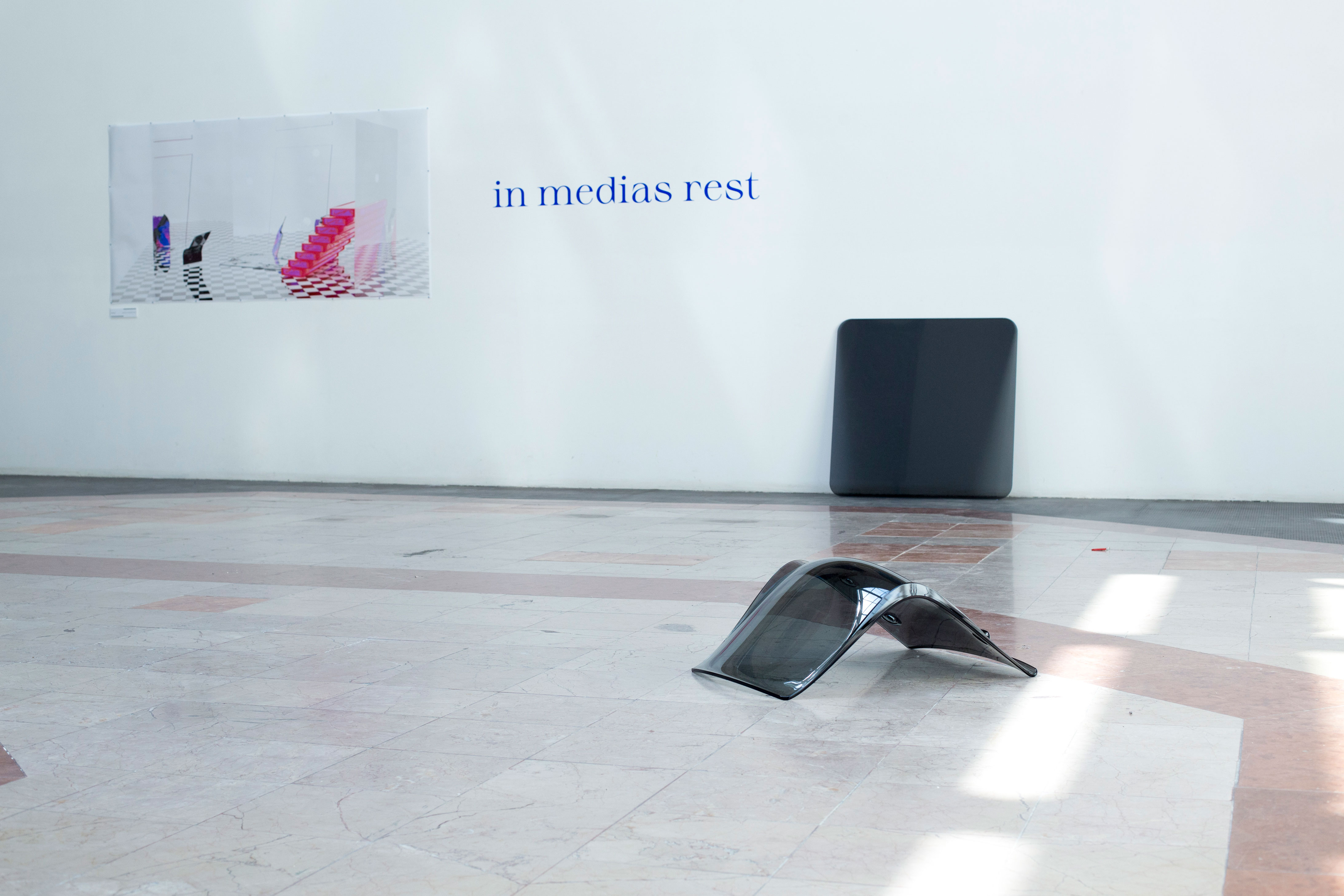
background: 'what if there is a world outside of the box' right: 'flattie' right-front: 'you can look at it for a long time but won't understand it. you have to sit in it.'
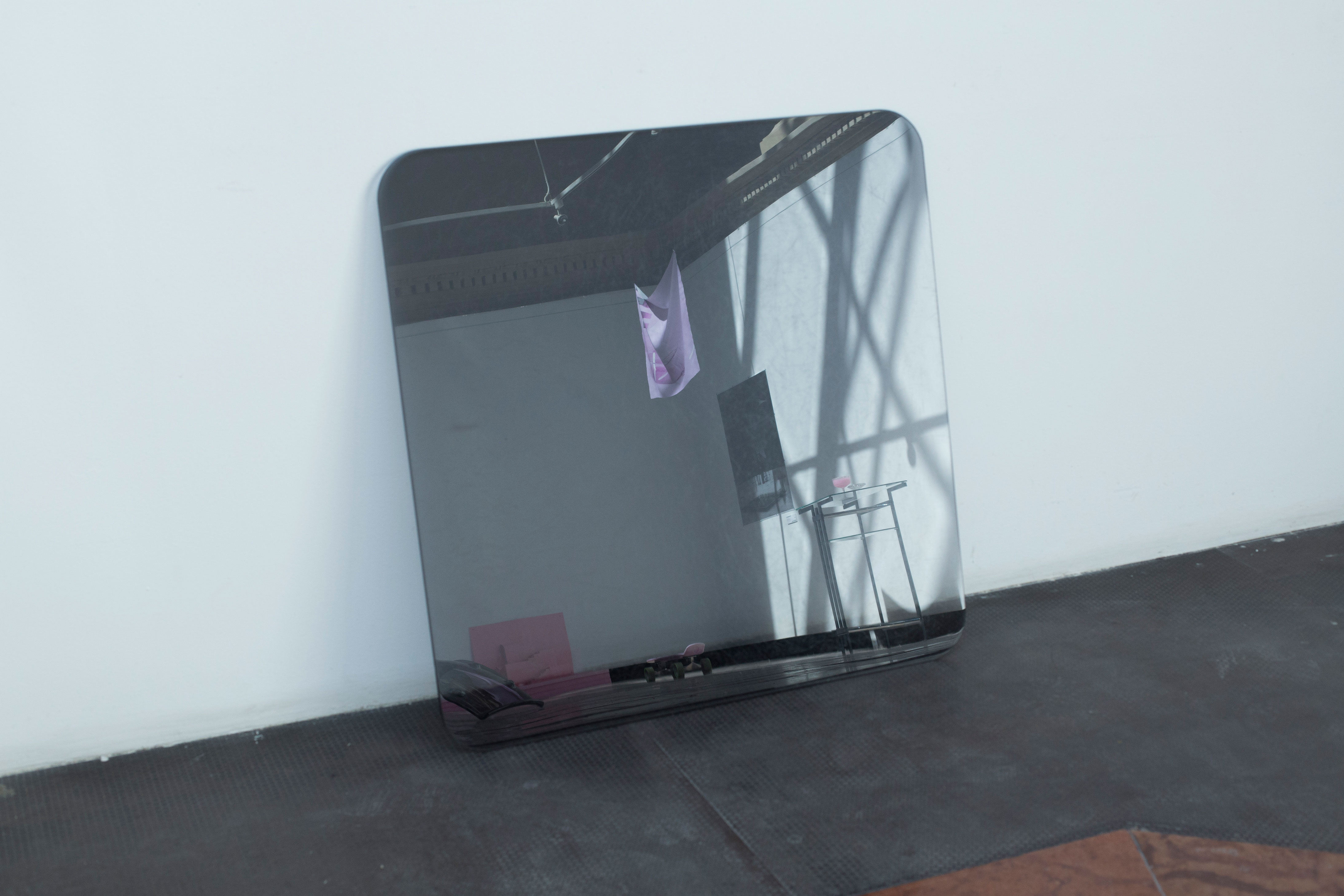
'flattie'
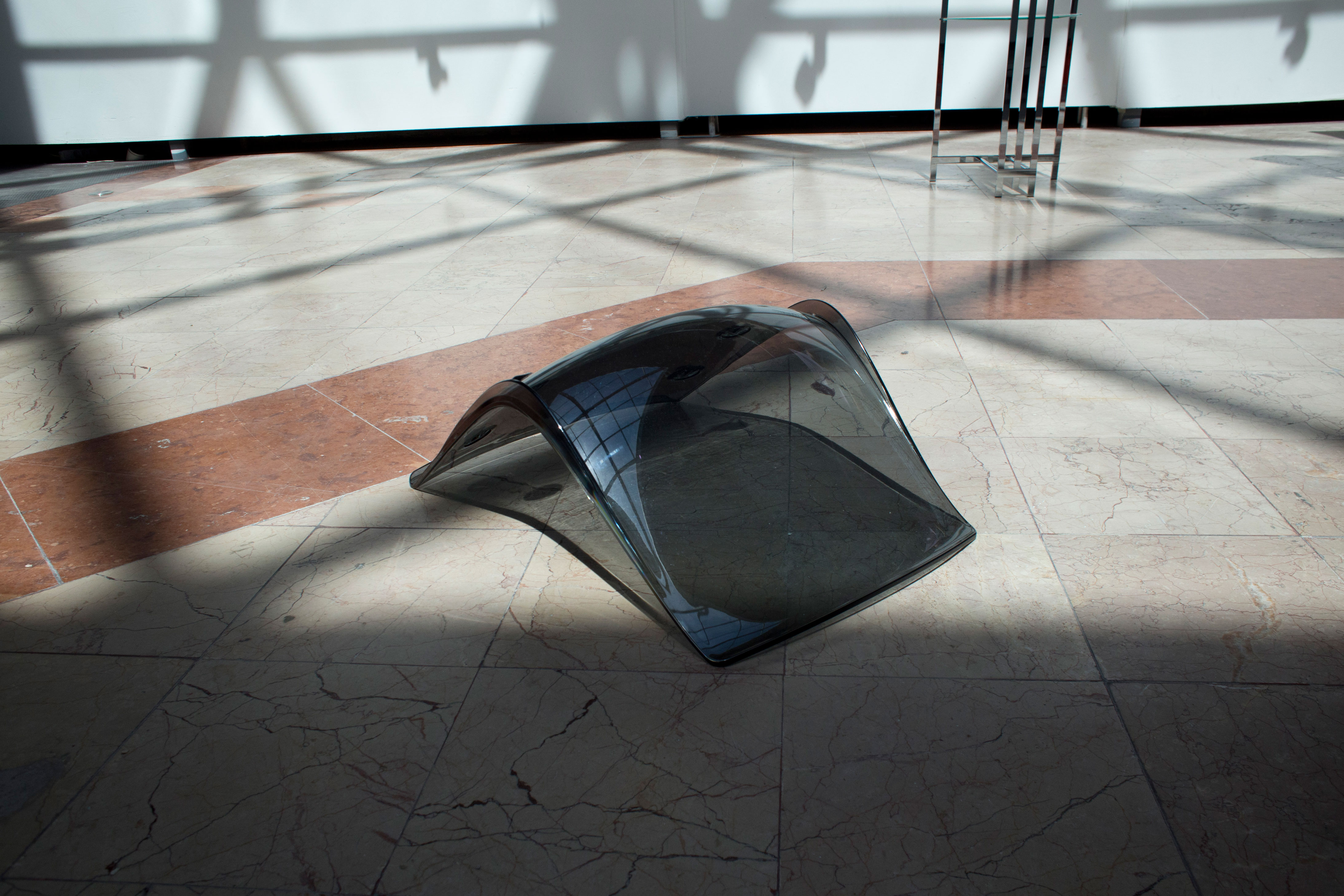
'you can look at it for a long time but won't understand it. you have to sit in it.'
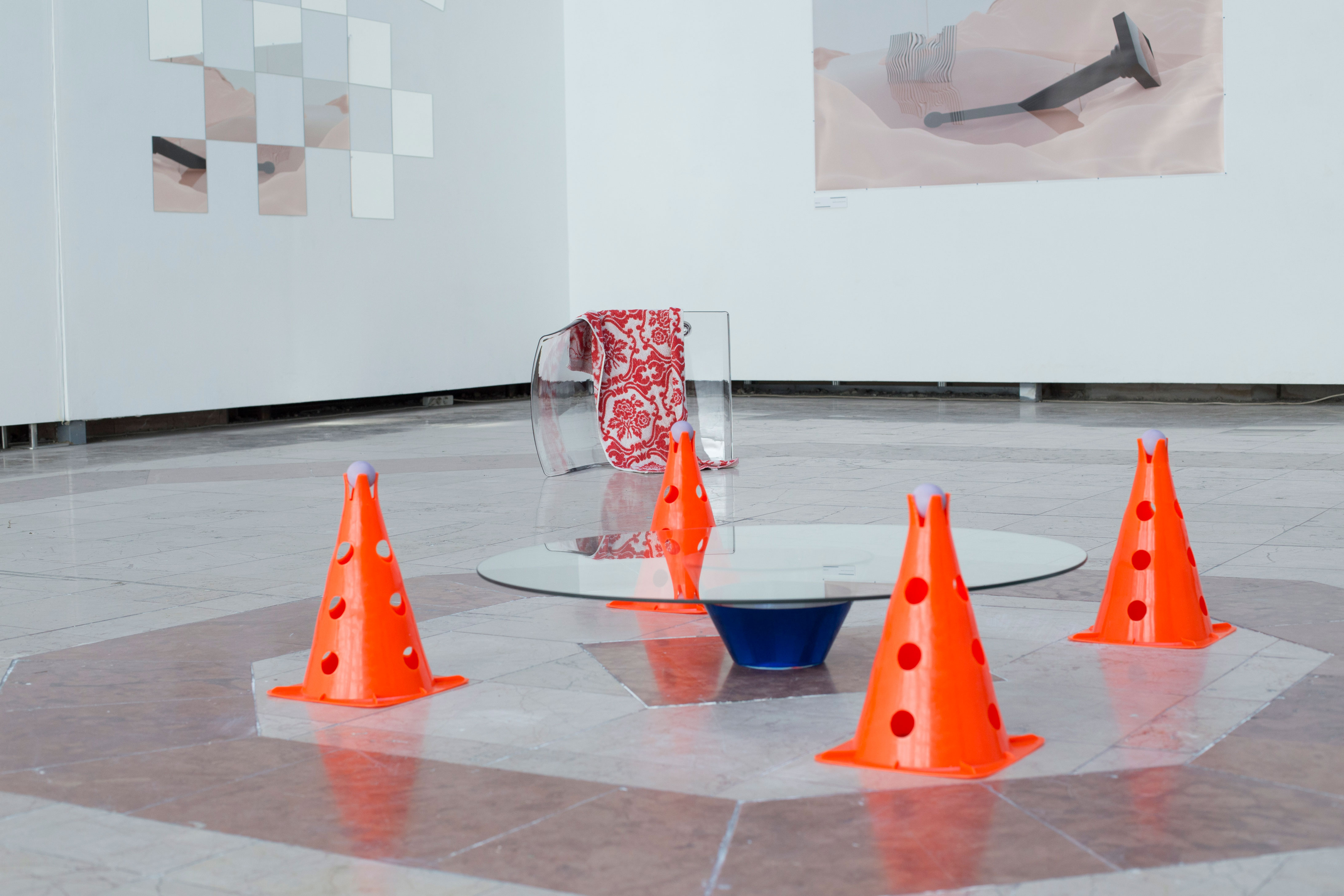
'the hug'
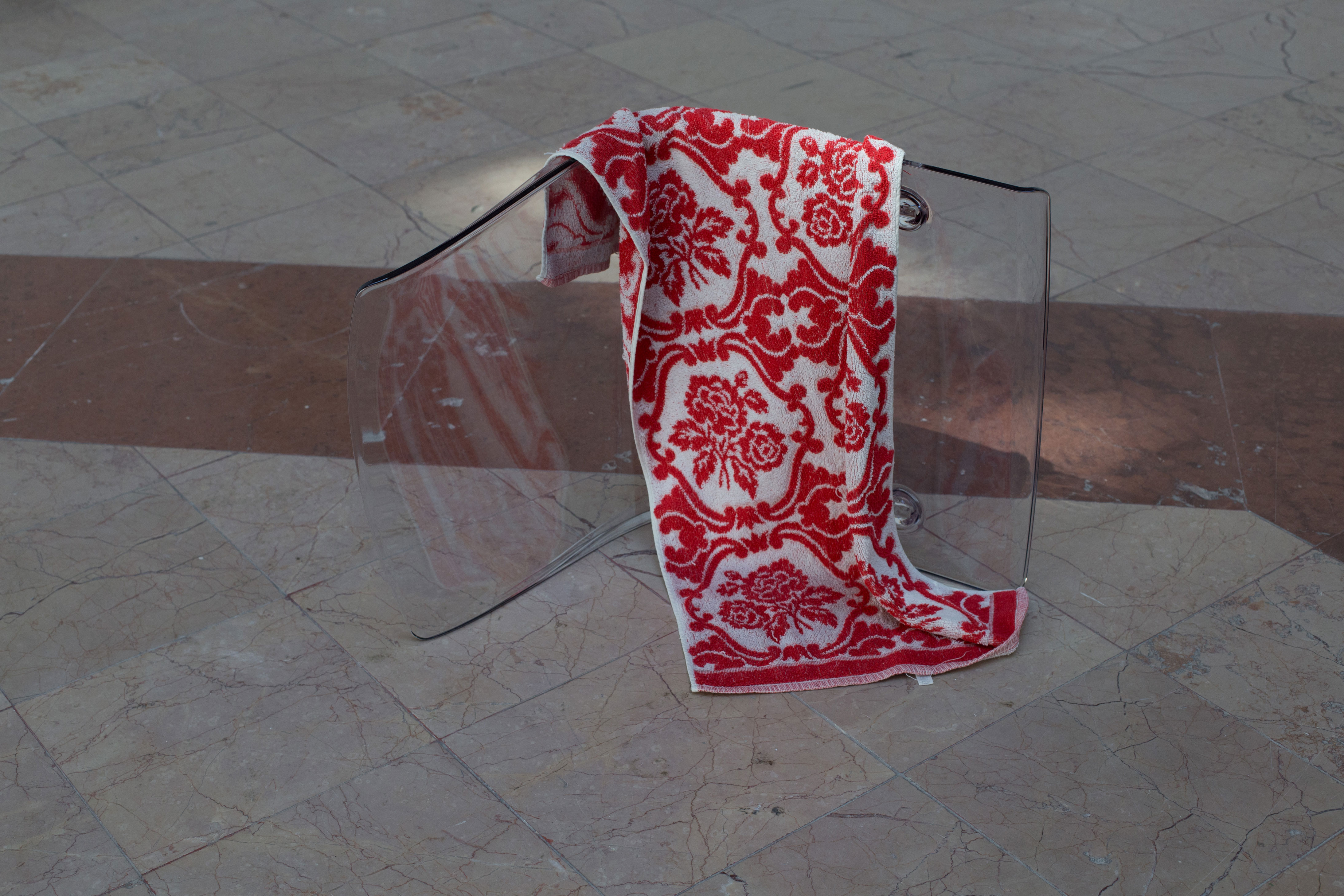
'the future is here and it will never end'
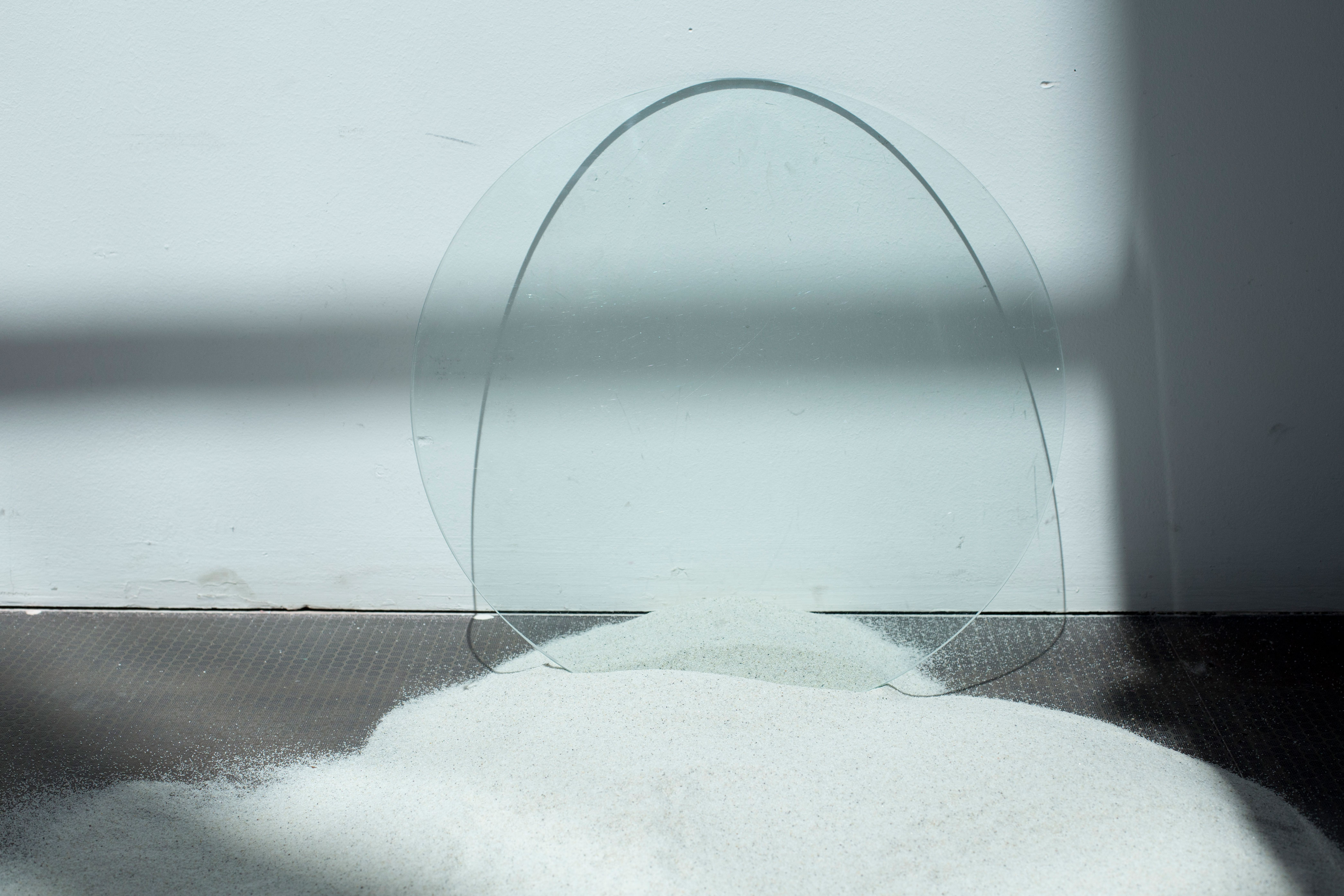
'rest' detail
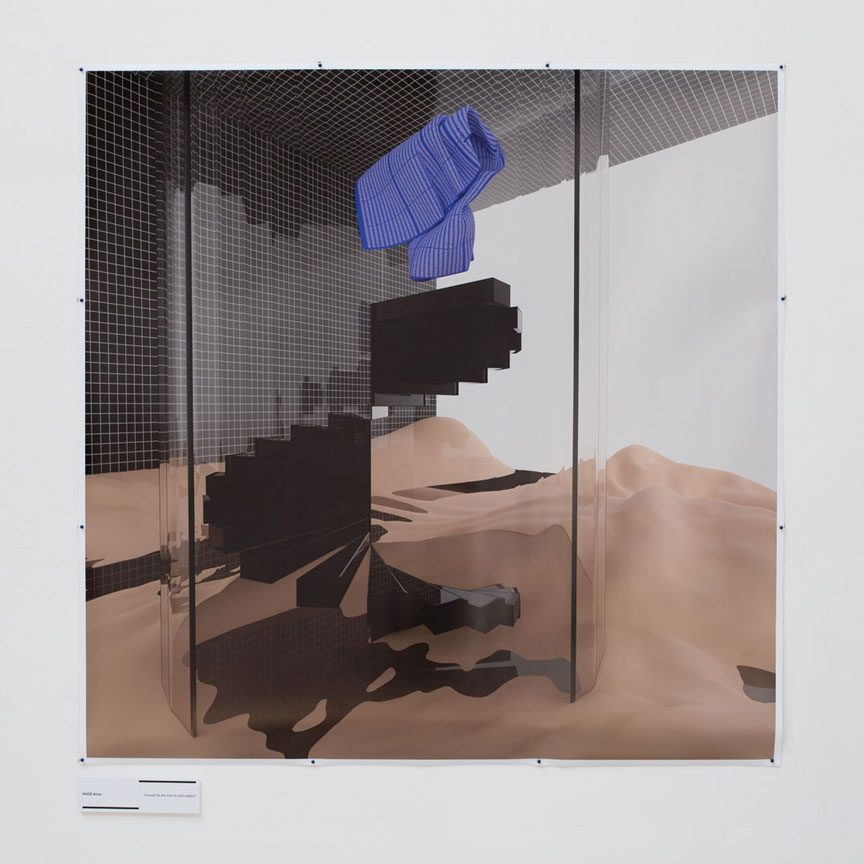
'-it would be the end of solid edges?'
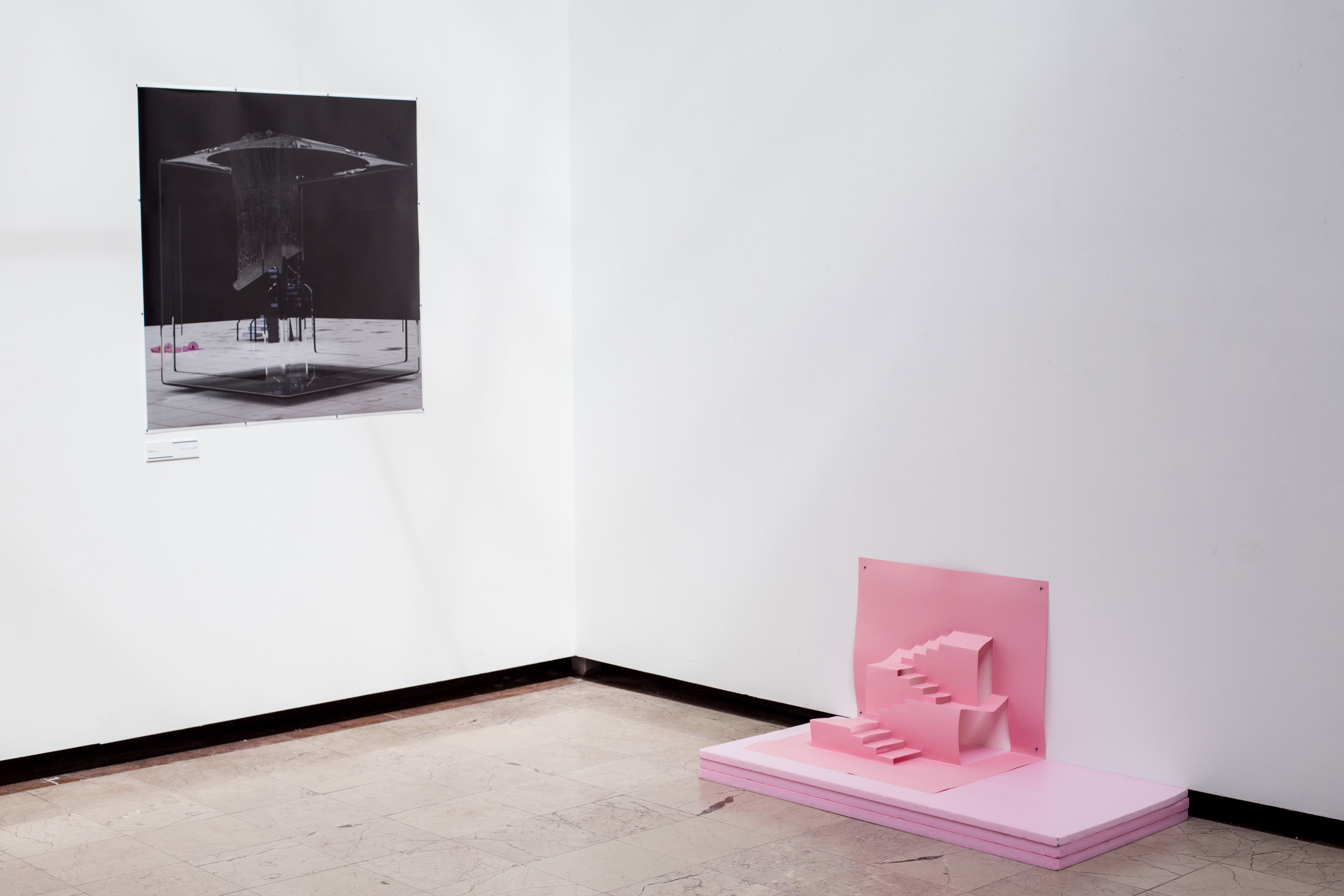
left: '-you mean you are flattered?' right: 'stair at me'
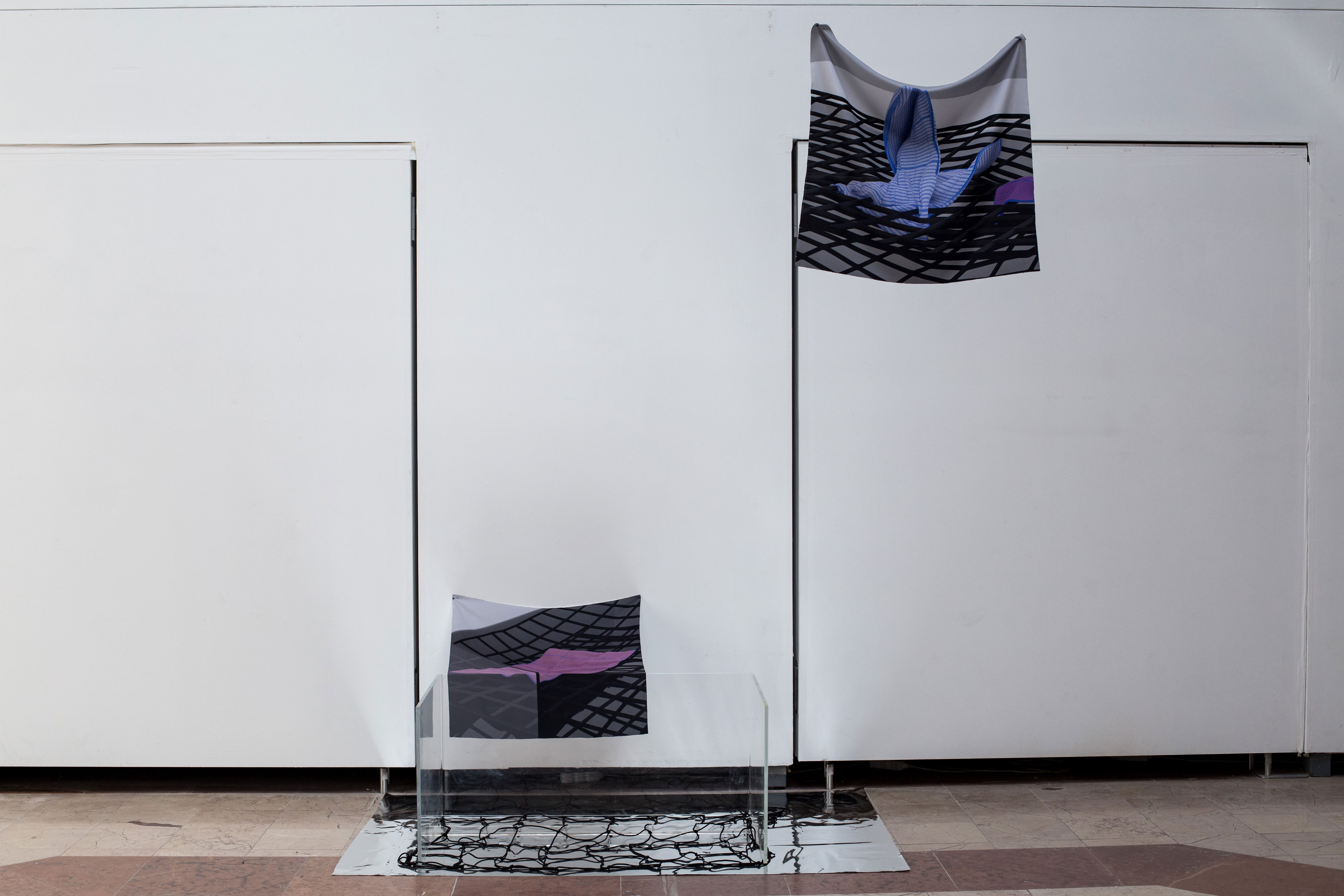
'yodo (you only die once)'
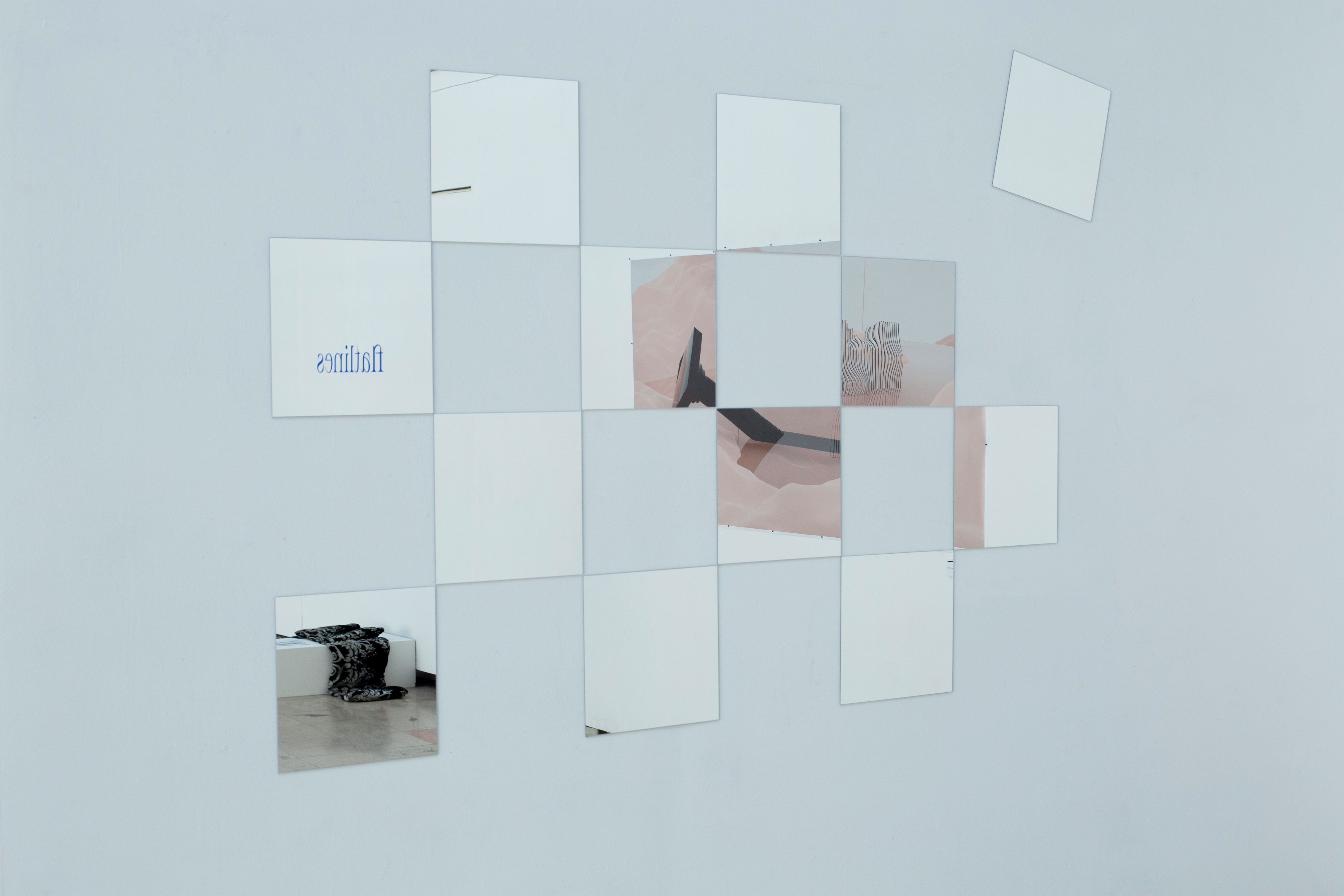
'-after life, do you have any plan?'
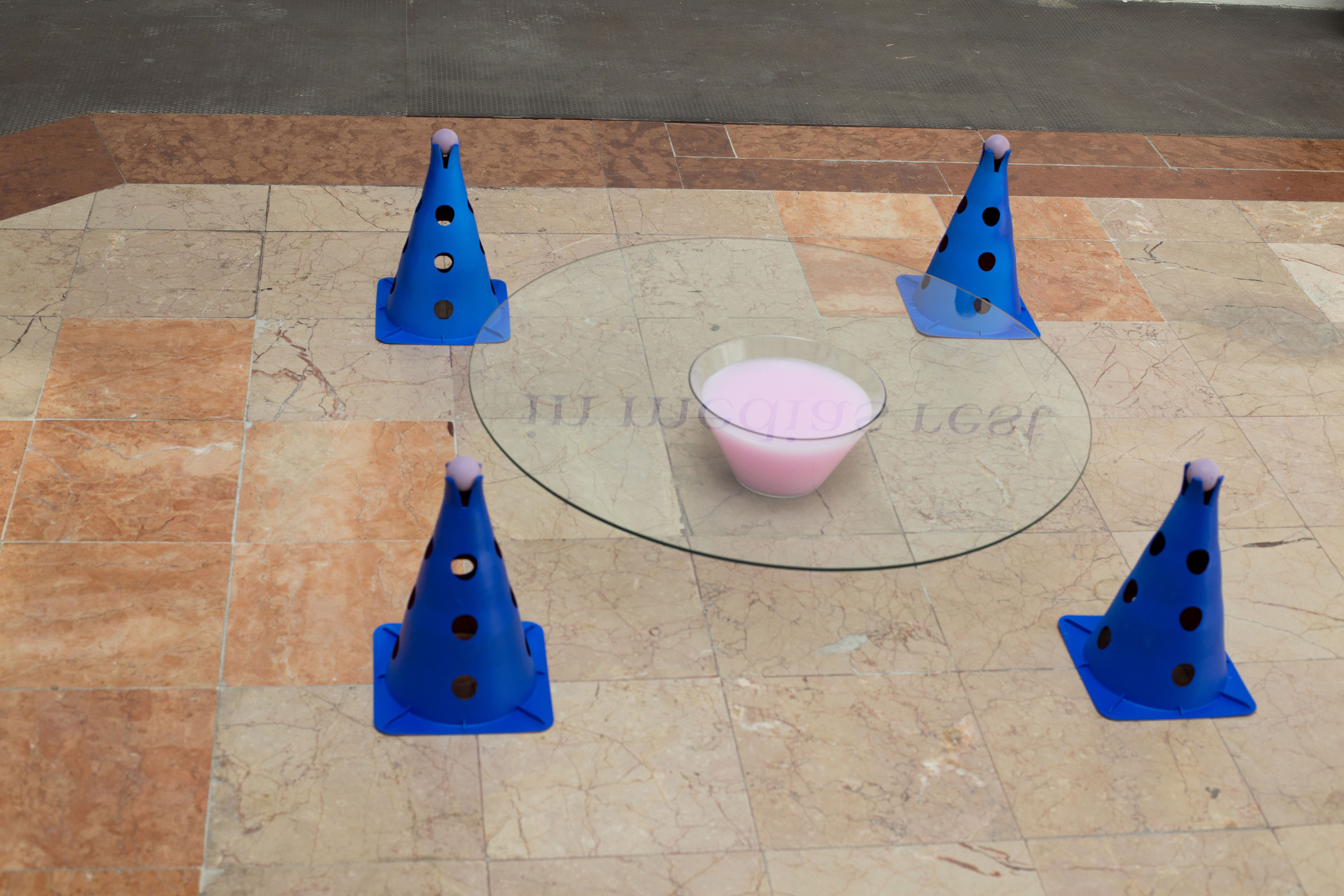
'the hug' on Best of Diploma Exhibition
installation
The Flatlines series is concerned with the visualization of dimensions, temporal collision and the unfolding of pictorial narratives.
Flatlines processes the afterlife of the three (axes/) planes in an anthropomorphic setting.
After the imaginary encounter of the planes, the observer can become involved in their everyday lives. In my diploma installation I extend their world onto the physical realm.
flatlines
from the 1. episode
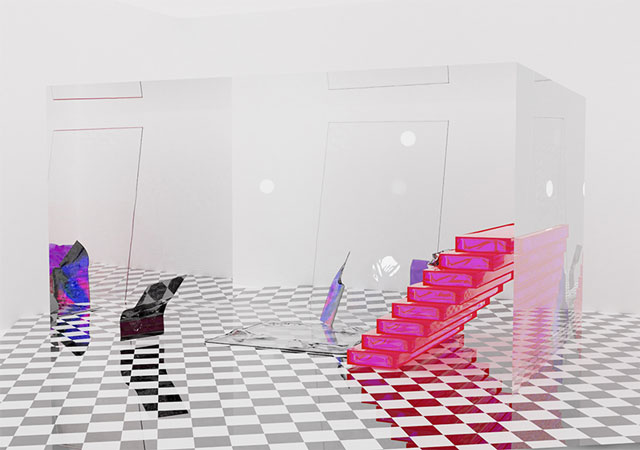
-what if there is a world outside of the box?
from the 14. episode
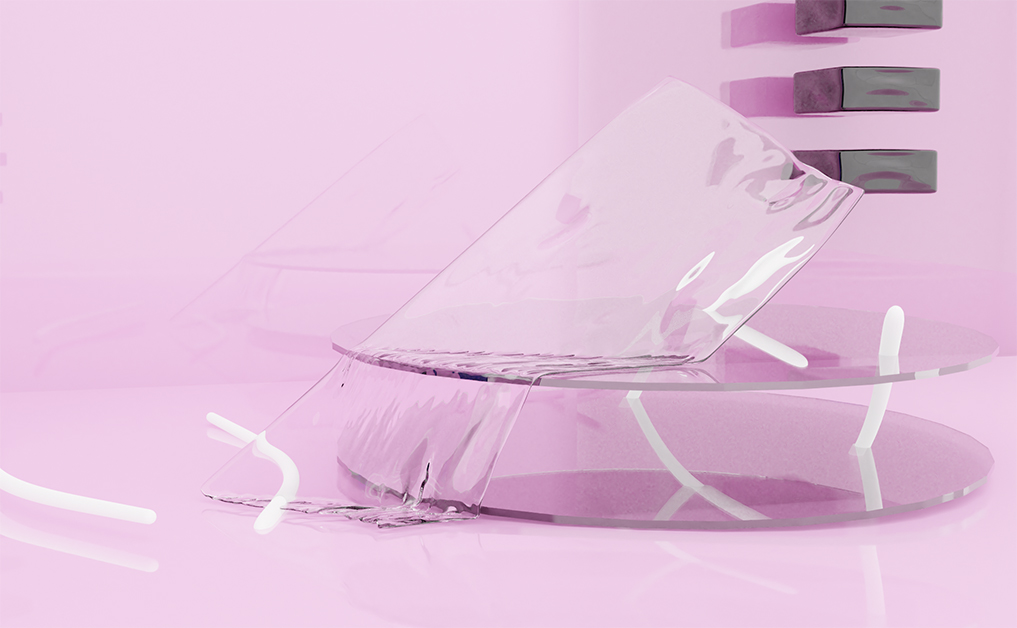
-eh, let me just rest here, working on my posture
from the 19. episode
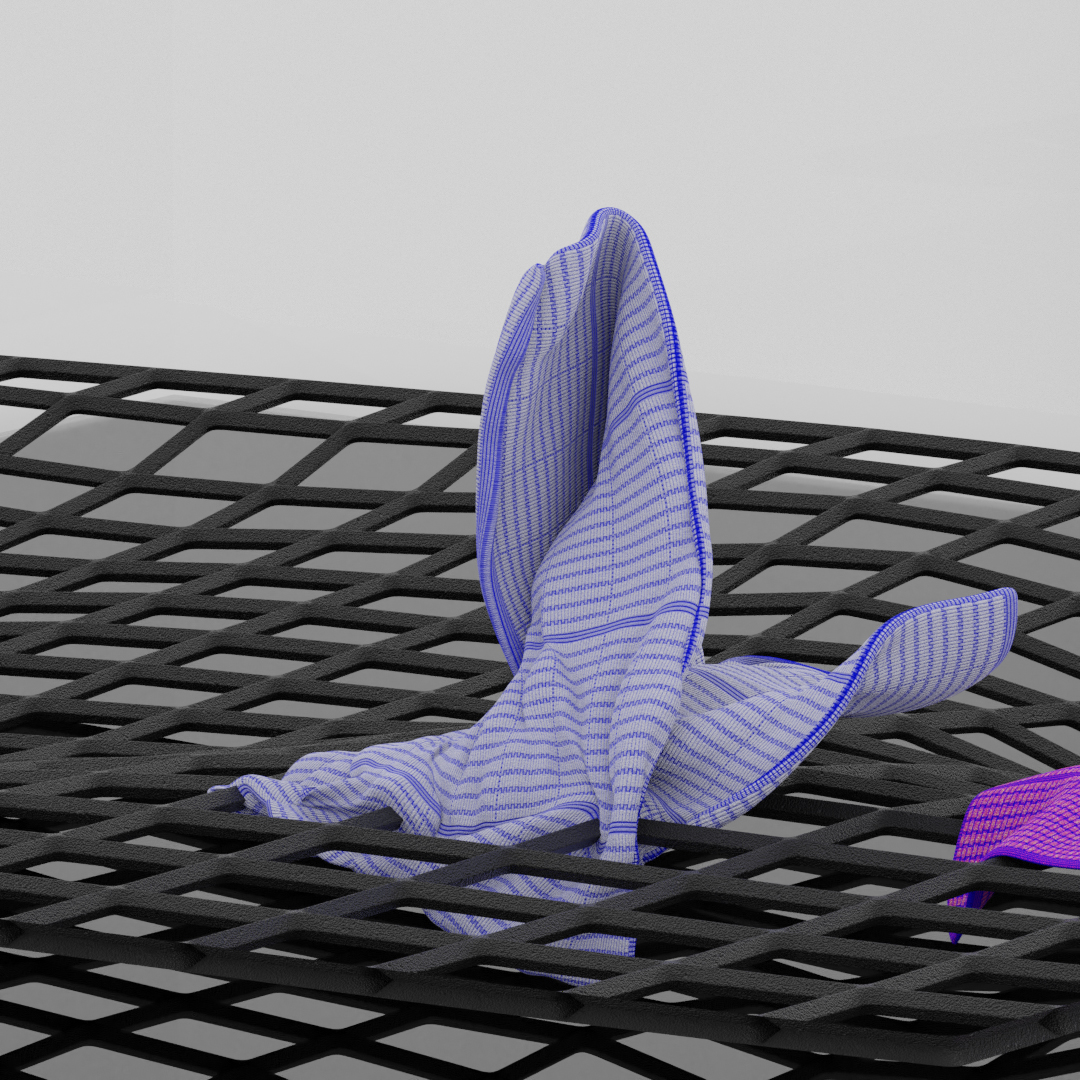
-yodo (you only die once)
from the 23. episode
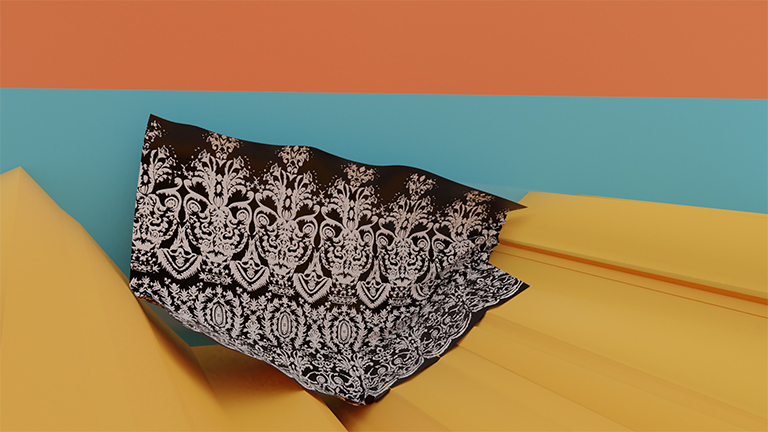
-oh
from the 24. episode
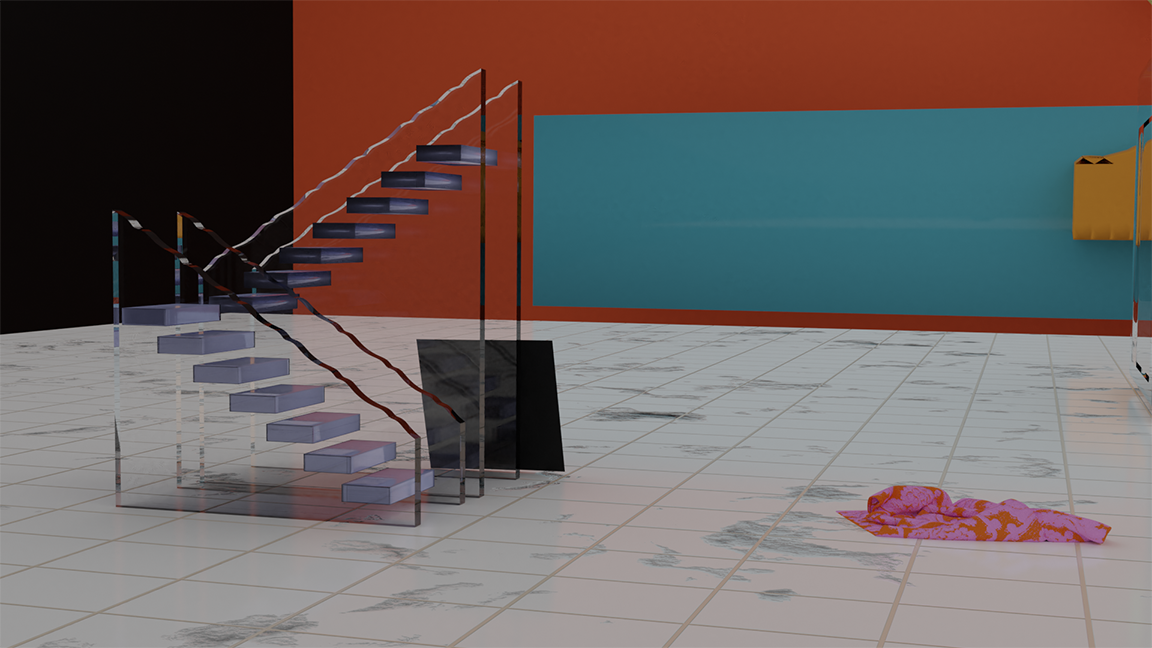
-you mean you are flattered?
from the 27. episode
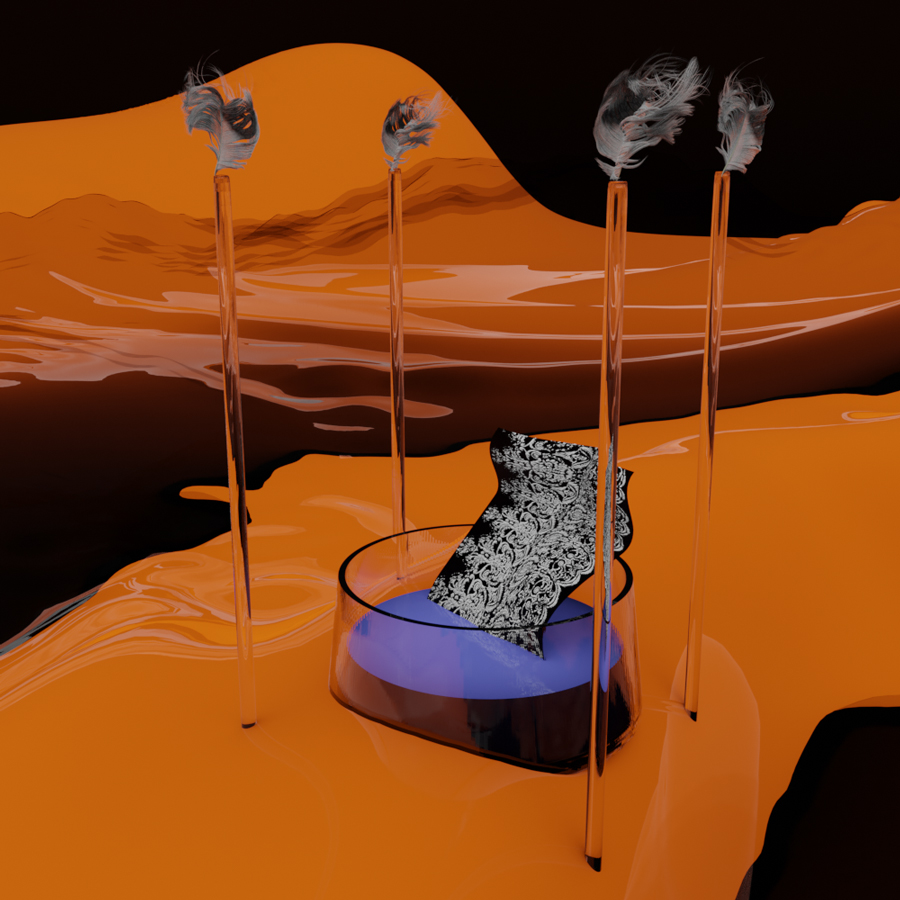
-have you seen me? now you have
selected from the ongoing series
The Flatlines series is concerned with invention of it's own millieu. Depending on dimensions, temporal collision and the unfolding of pictorial narratives in the post digital era.
Flatlines processes the afterlife of the three (axes/) planes.
imaginary instruments
forms as objects
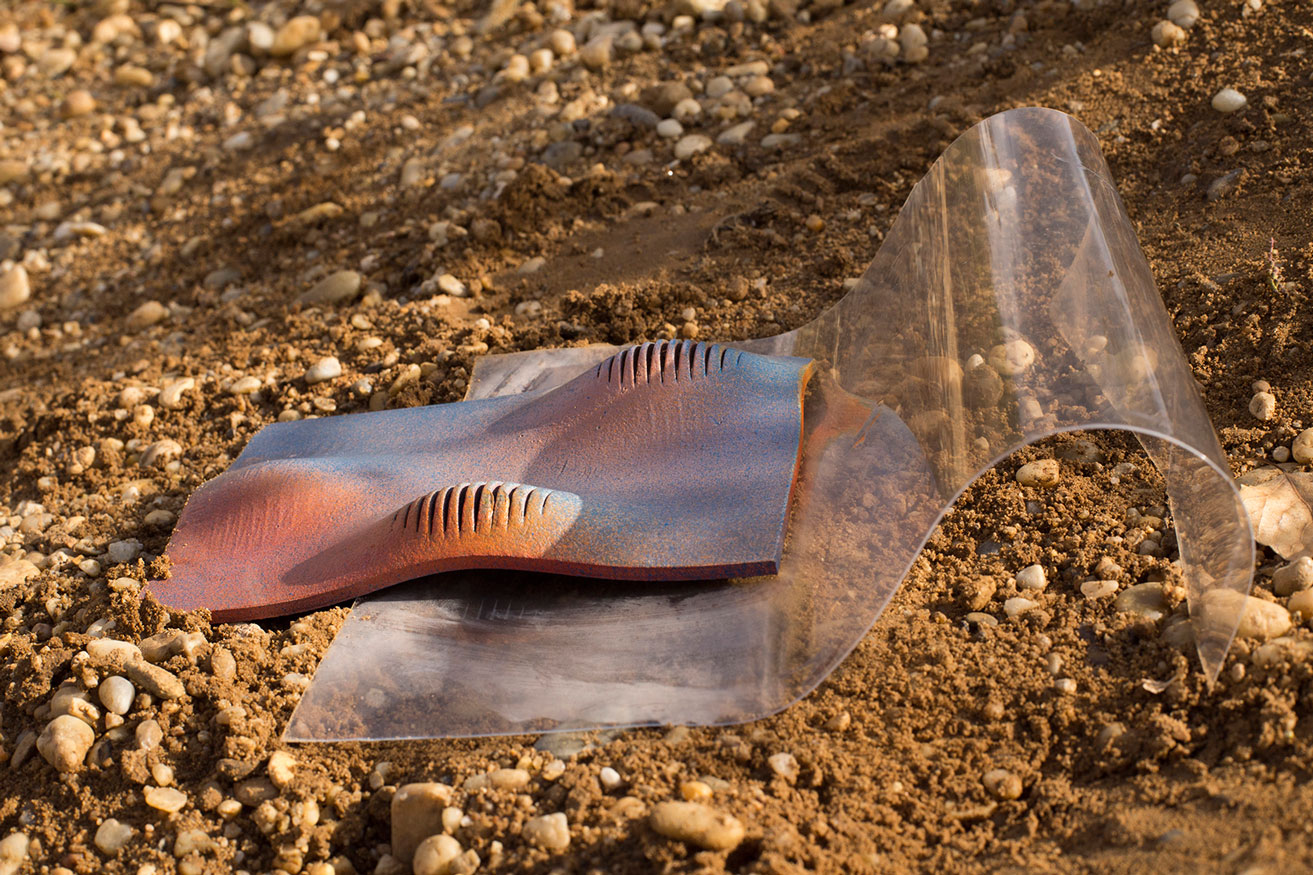
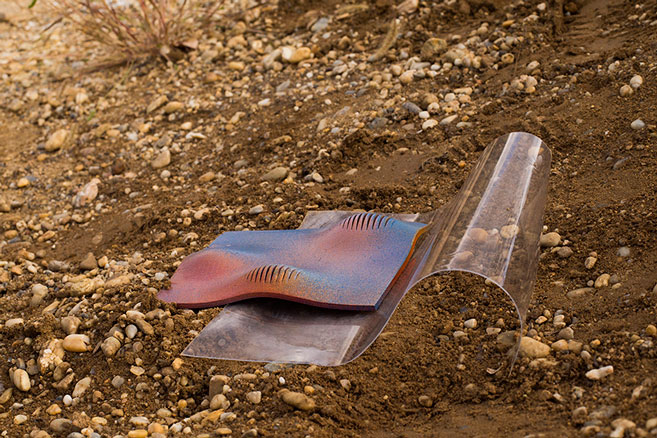
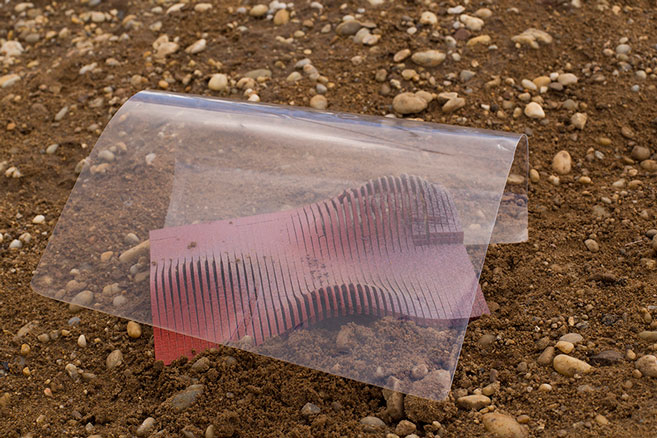
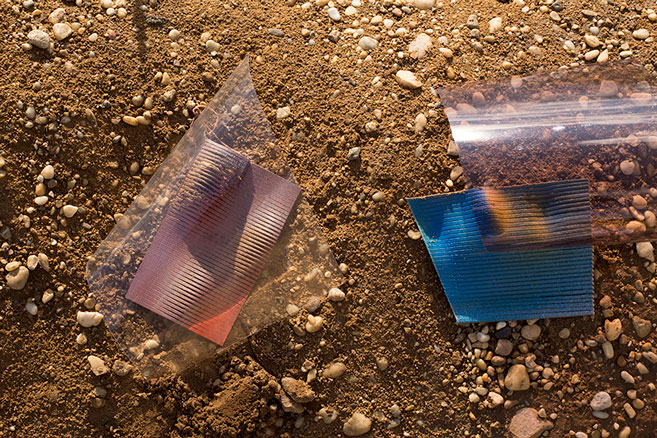
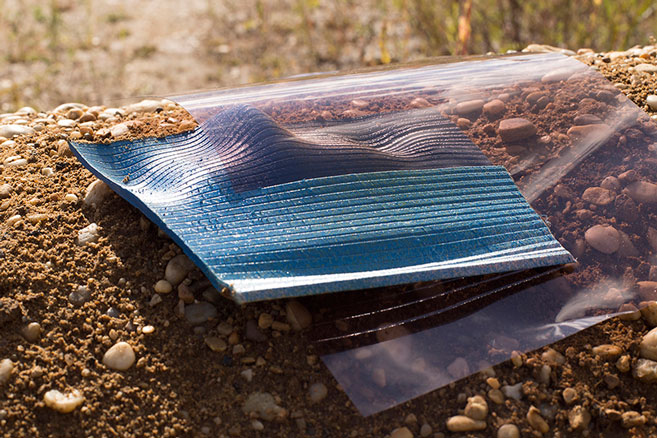
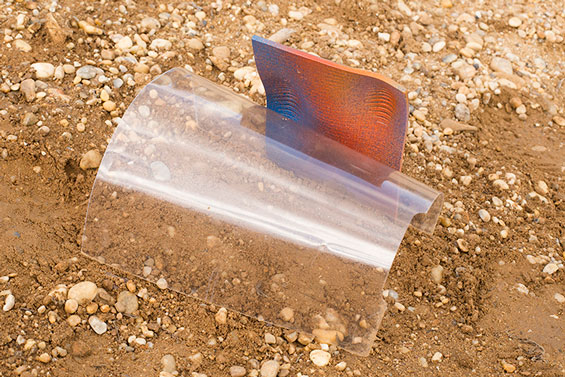
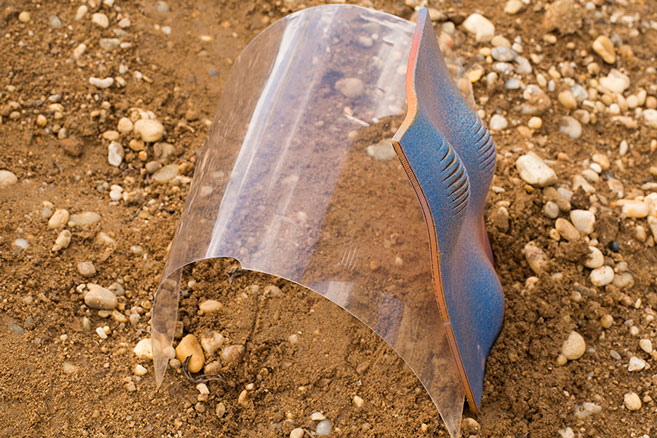
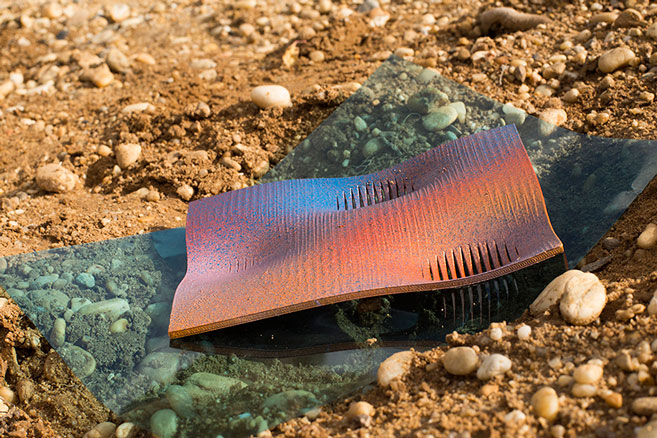
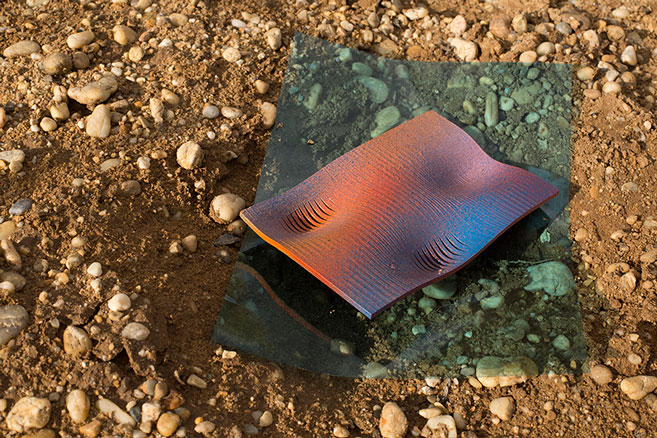
3d printed objects, spray paint
In the 19th century, the advent of the machine gave rise to a sense of moral and cultural danger in people. They had a hostile attitude towards machines, believing that something made by a machine could not fulfil an authentic role. According to John Ruskin, machines can only create inauthentic things, which are dead, and this attribute of deadness extends to the person using them. Nowadays, analogue imaging has regained its appeal in an accelerated world. It offers a safe escape from the rush. As a counterpoint to the unstable, fast-changing present, manual dexterity is becoming fetishised and valued. The digital dead copy is opposed by the value of the unique art object. In my view, it is not necessary to choose between the two; instead, the two poles should be combined. I have created spatially modular forms by means of architectural design. By parameterizing the structure, the arrangement of lines evolves into stripes on the surface of the object, where gaps create different wholes. And through the randomness (errors) of 3D printing, a third rule applies to the generation of objects. To me, a structure, each unit of which is modulated, takes on a very living, organic form. I find it interesting to behold the object, the form, through the lens of painting, where the permanent subject of painting, the form, is taken over by the surface of the object being made.
towels
drawing machine
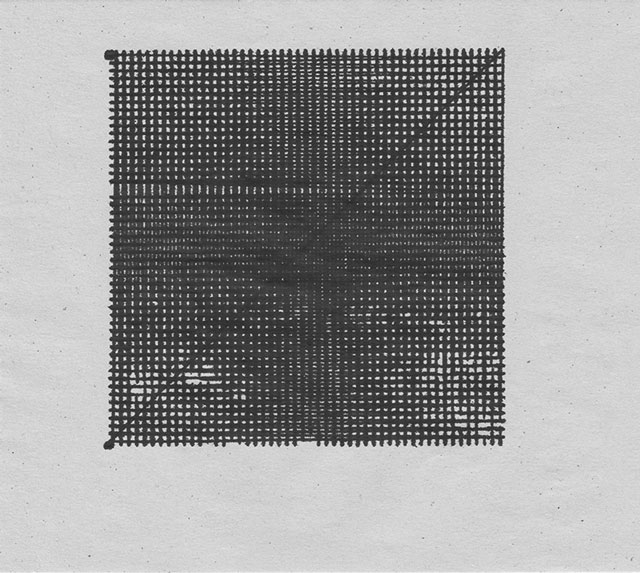
slow grid,14,8 x 20,8 cm
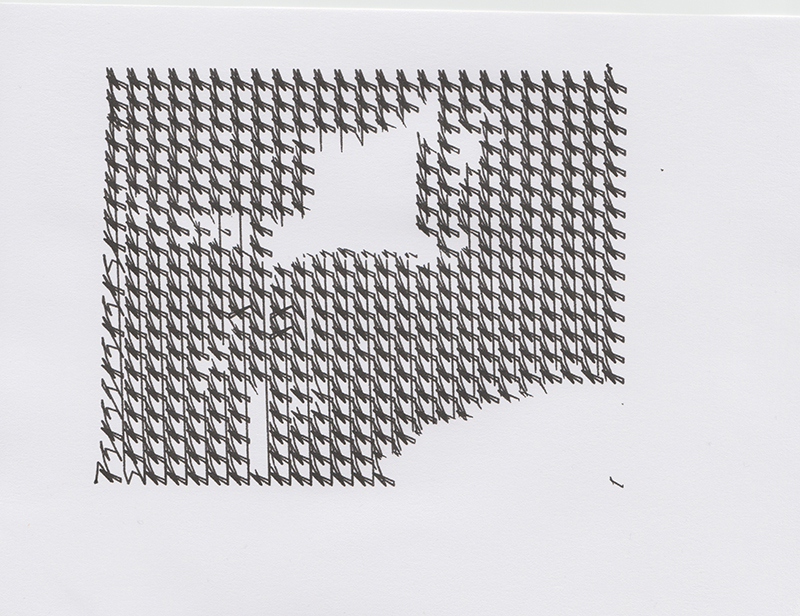
'k' grid, 14,8 x 20,8 cm
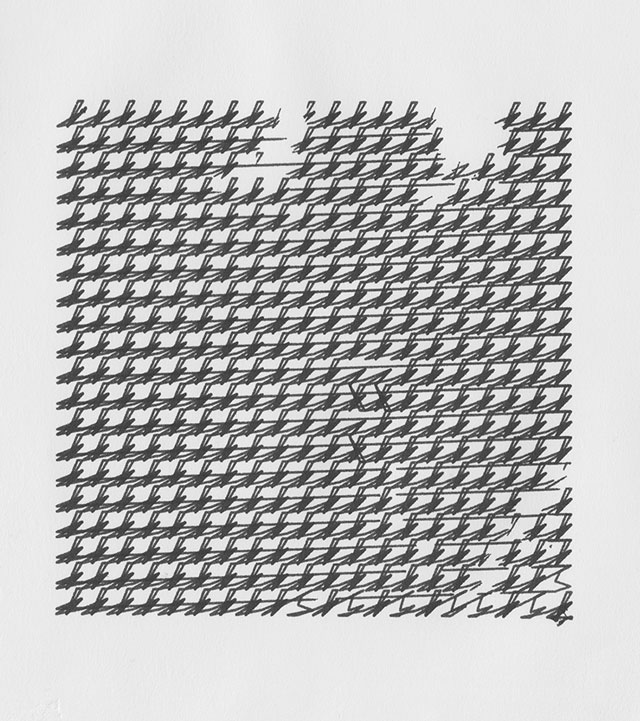
'k' grid, 14,8 x 20,8 cm
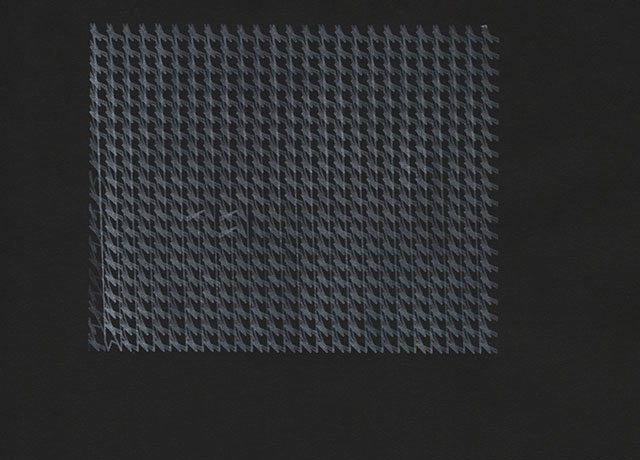
'k meets h' grid, 14,8 x 20,8 cm
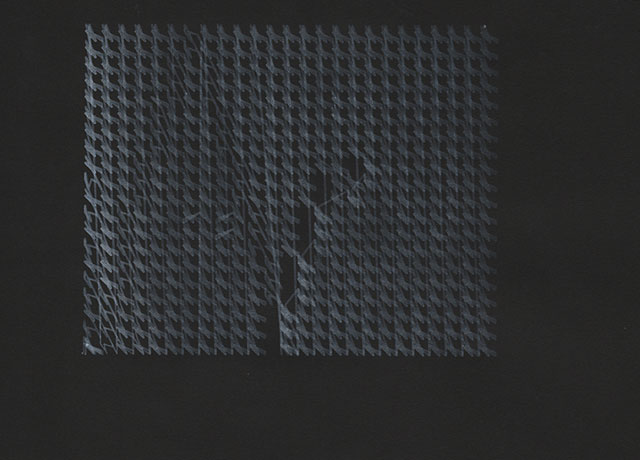
'argument' grid, 14,8 x 20,8 cm
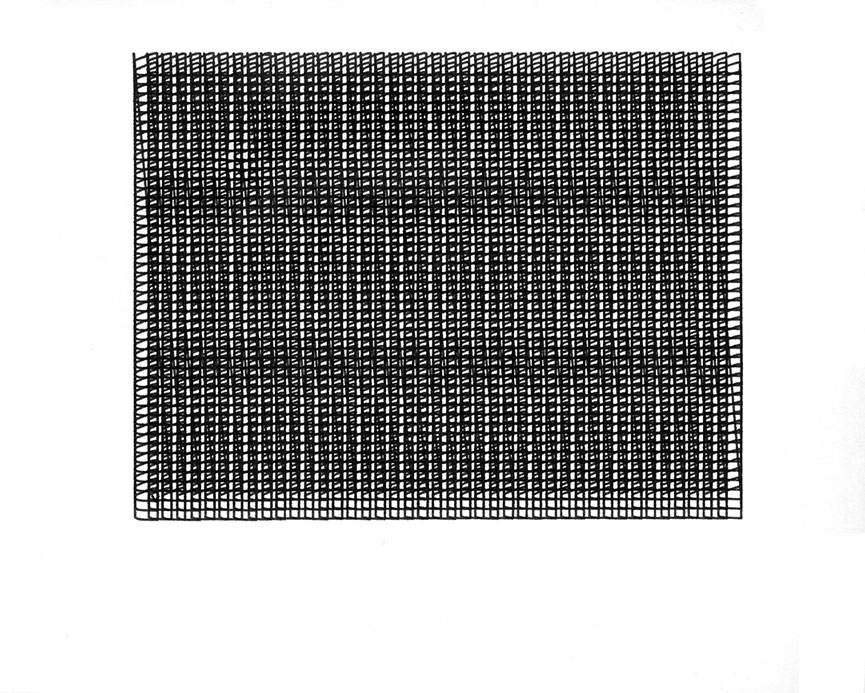
squares, 14,8 x 20,8 cm
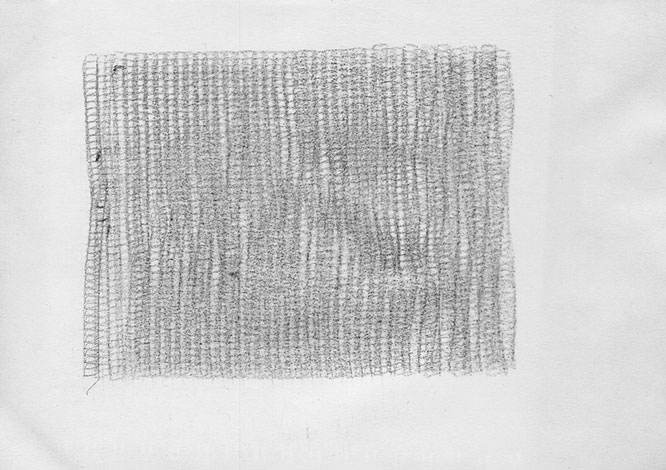
squares, 14,8 x 20,8 cm

narrative line, 24,8 x 34 cm

narrative line, negentropy-grid, 24,8 x 34 cm

meet up, 24,8 x 34 cm
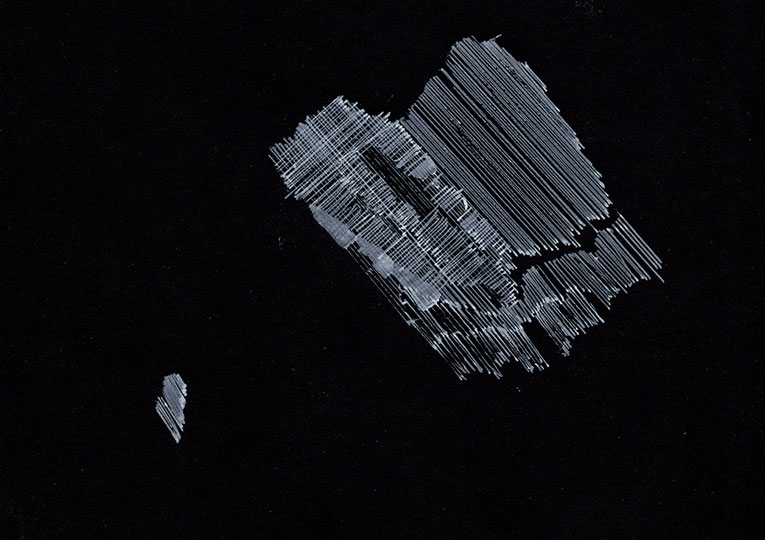
narrative lines, 14,8 x 20,8 cm
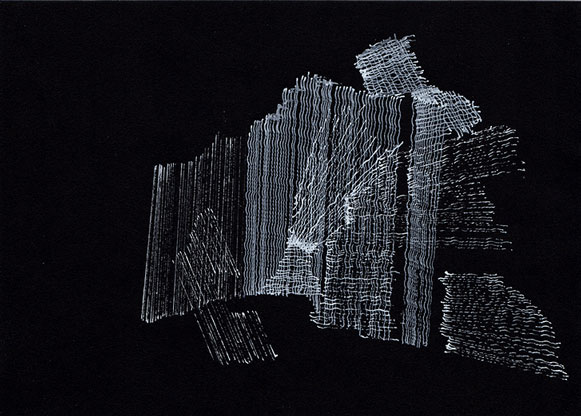
narrative lines, 14,8 x 20,8 cm
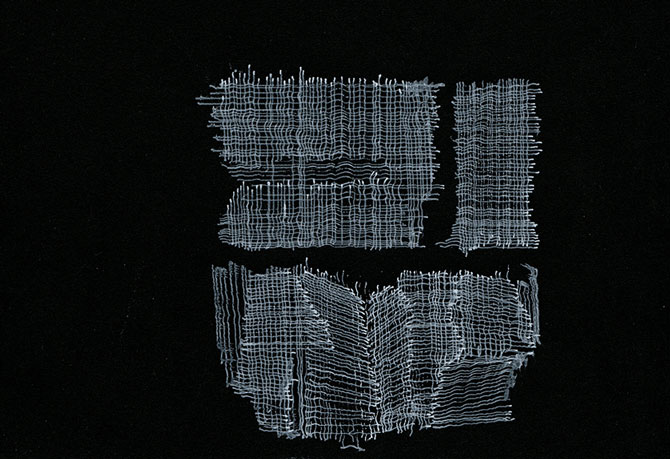
narrative lines, gathering, 14,8 x 20,8 cm
3d printed drawings, ink on paper
I developed a system that makes drawings with a 3d printer. A hacked 3d printer, using only it's movements as a plotter machine. In this method, I work with all 3 axes of a coordinate system, which in result draws a 2d image. First I started with Morellet paintings’ structures, then I disorganized these randomly. Then I experimented with my handwriting where I have noticed that a lot of the time the u, v, n letters look the same. I organized them in structure and 'printed them out' but the result had some random born technical errors, empty spaces. Then I began to make my machine drawings with a ruler, and a faulty printed wavy material. I wanted to imitate a machine with my lines, and interpret my technical errors as pseudo-elements in this series. This was an interesting part for me, almost like as if I had a conversation with a machine.
catalogue of unfindable objects, pingpong
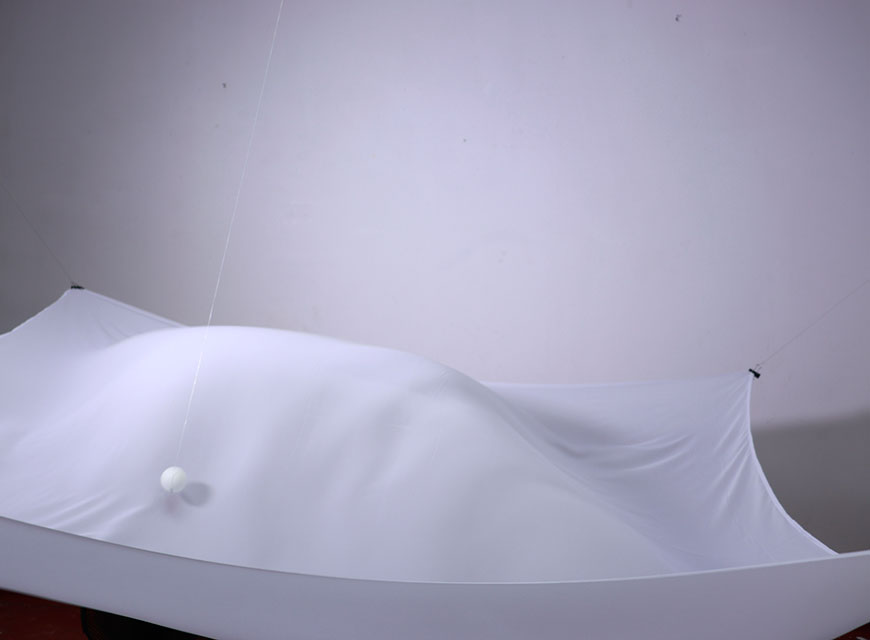
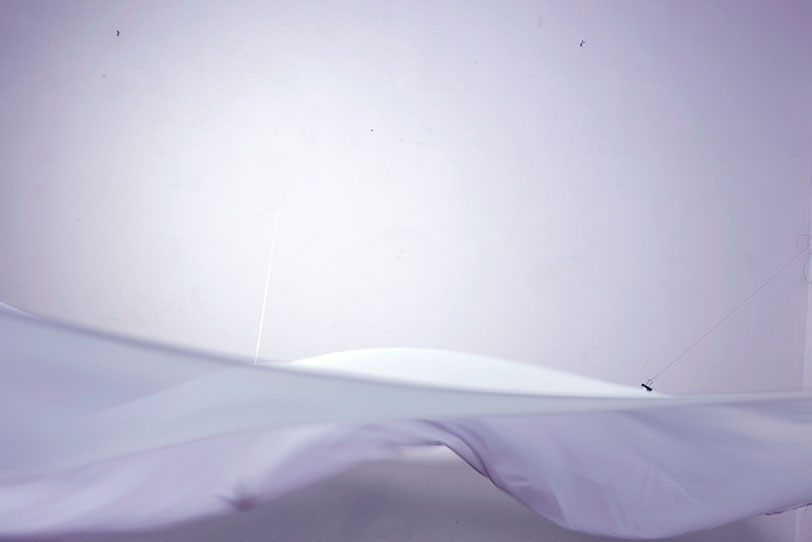
video
video, objects, installation
Within the catalogue of unfindable objects project I take such 3D scenes, tools and games from reality that are not incidentally not part of our everyday life. My point of departure was Jaques Carelman’s book Catalogue of Unfindable Objects, which ironically produced the typical impossible objects of its time. The installed piece is a reinterpretation of the ping-pong table, with a perpetual motion machine as its foundation, the undulation of which renders the presence of players superfluous. In the real space, the coordinated rotation of two fans sets the stretched muslin fabric in motion, on which a ping-pong ball dances back and forth. The automated and perpetually moving play of the kinetic installation offers the viewer a meditative, contemplative experience.
signals
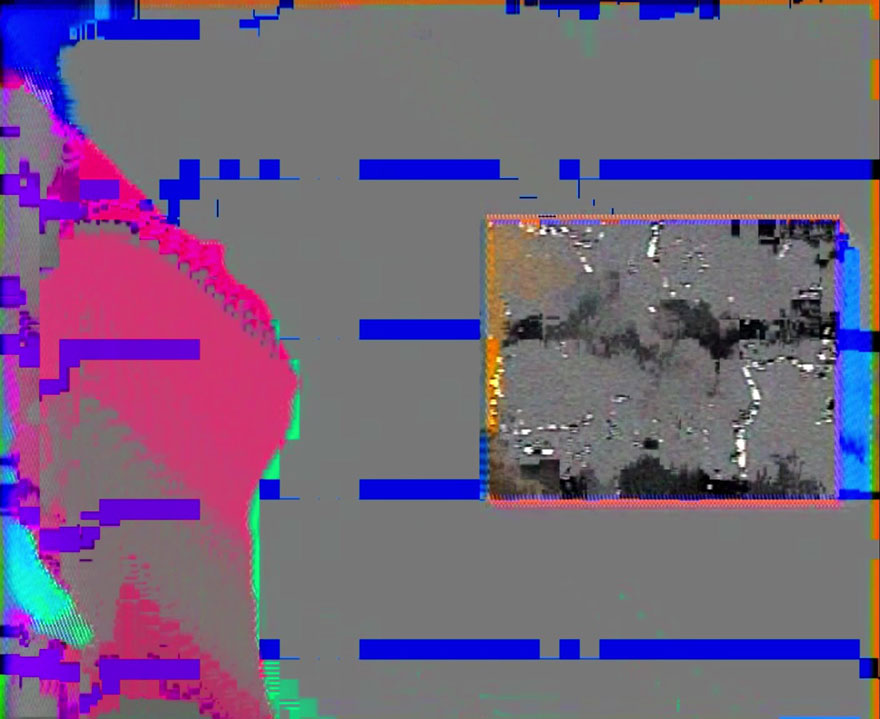
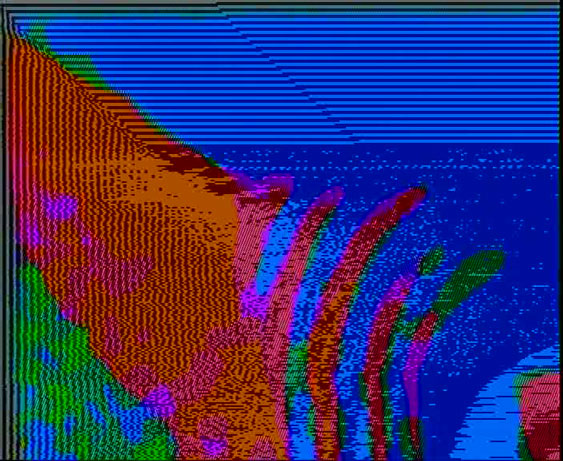
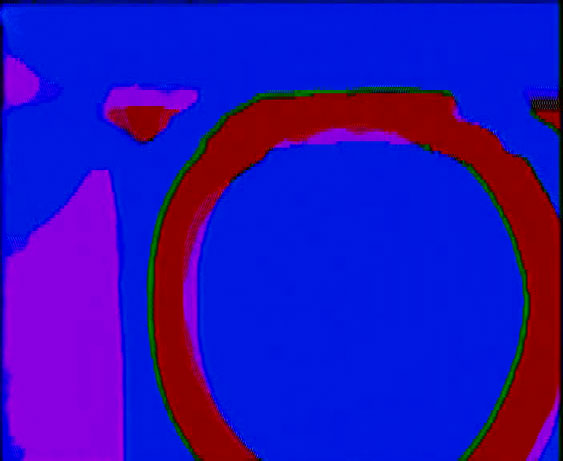
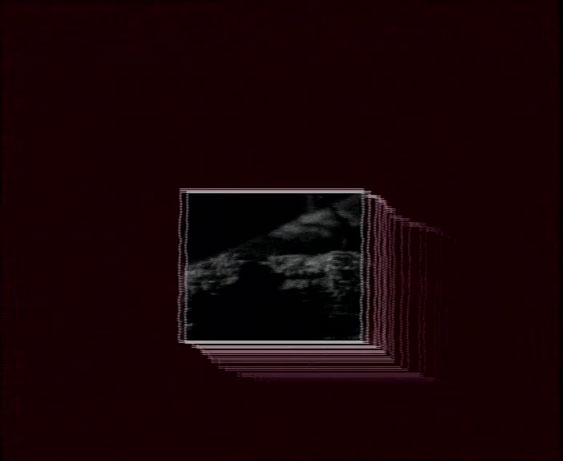
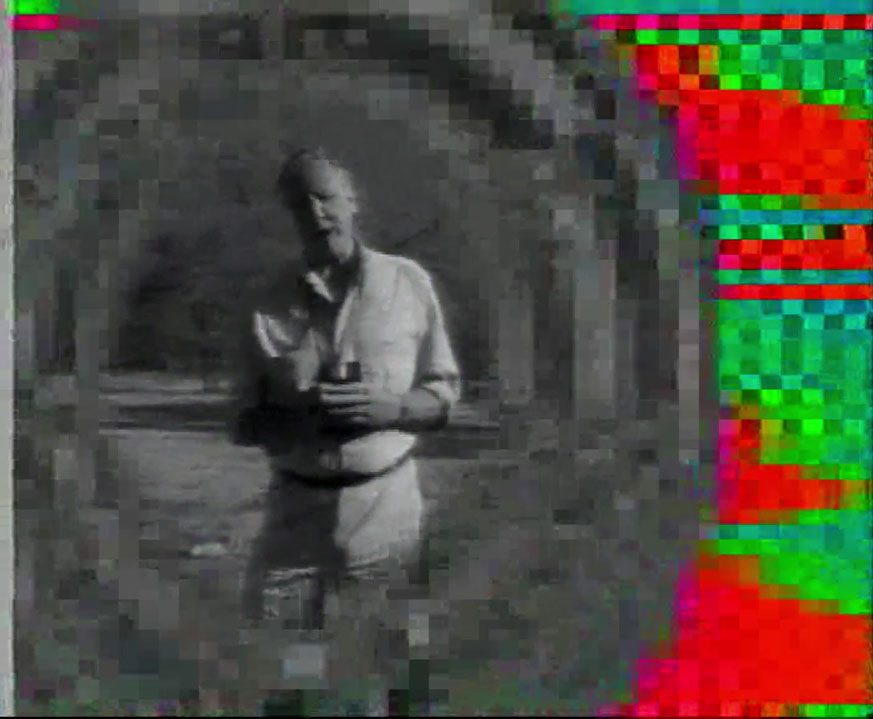
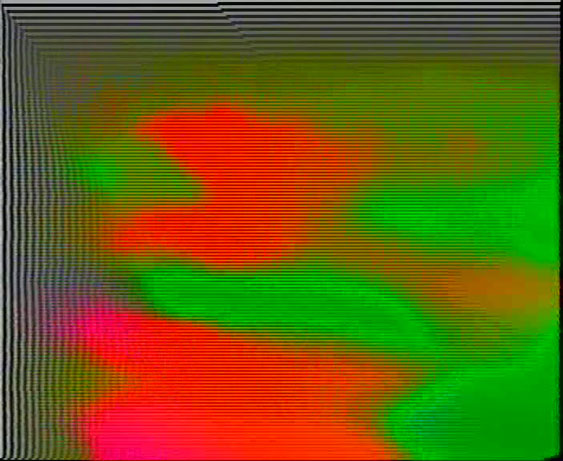
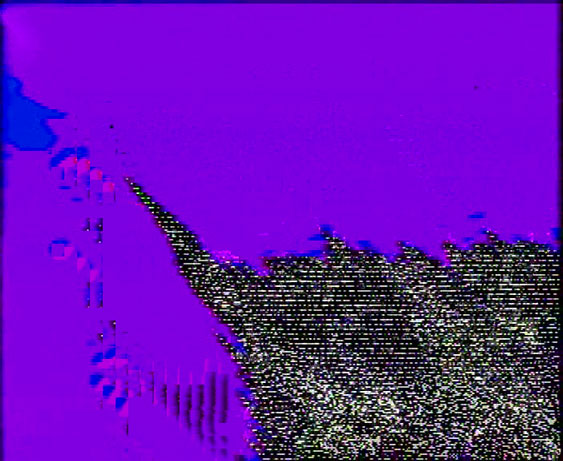
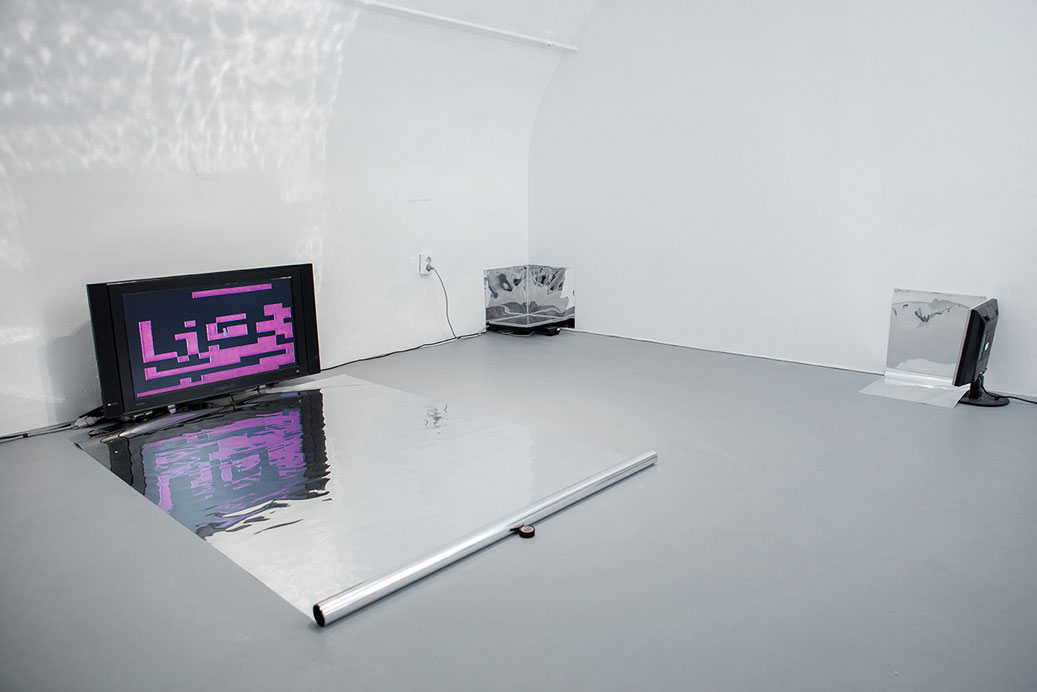
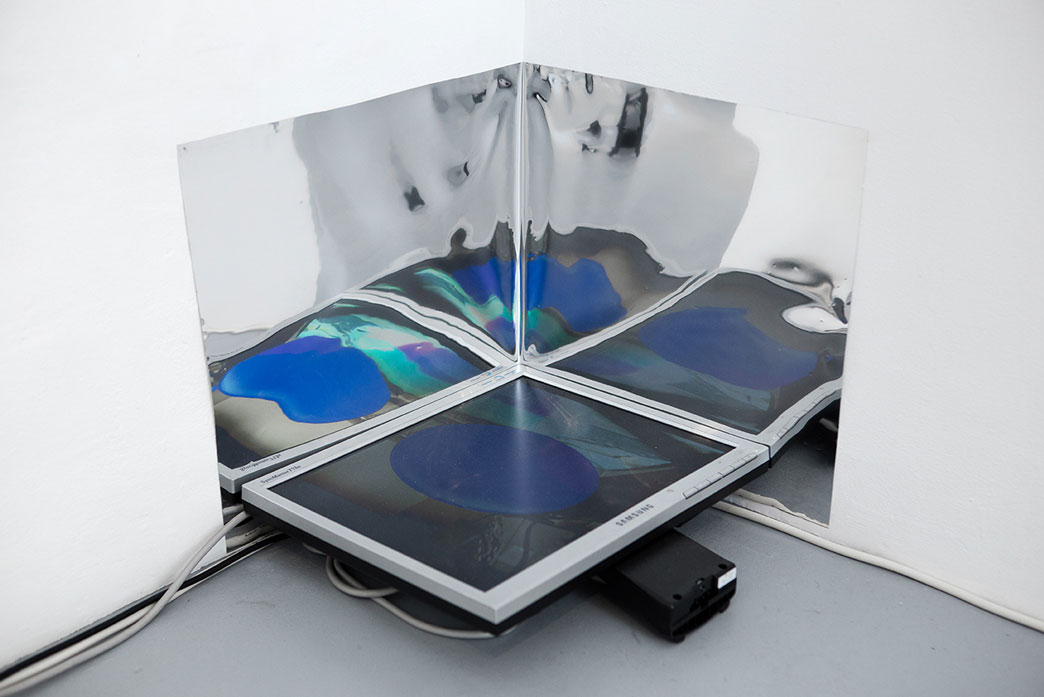
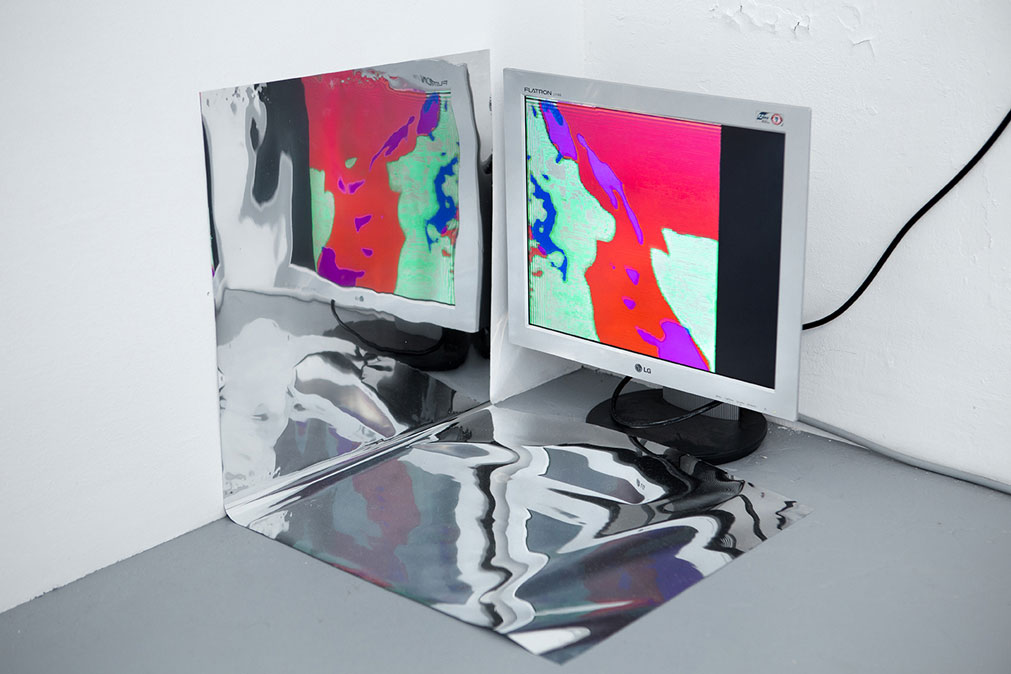
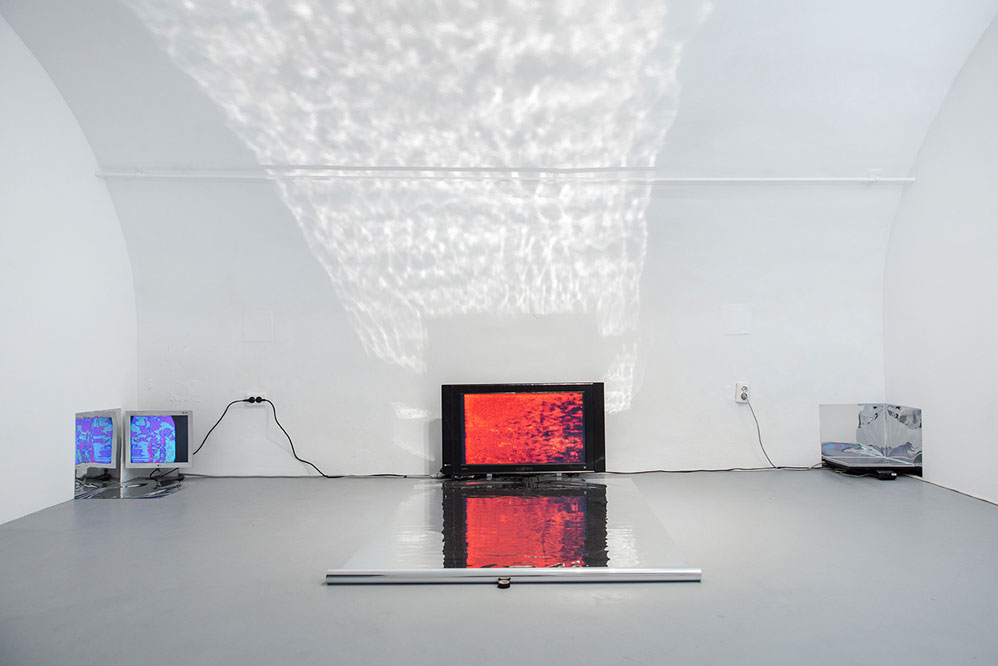
vhs modulations, video collaboration with loránd szécsényi-nagy
Having moved into a new technological age, as obsolete devices are replaced, their determining attributes are also removed from the medium, that are then unreproducible with new, state-of-the-art devices. However the fading of the memories and emotions caused by the lack of these devices is usually something that nobody accounts for. The click of the cassette at the end of the tape, the crackling of the vinyl, and the gradients of the polaroid appear to be missing for the users only after a significant time.With the disappearance of the VHS era and the spread of the digital age, analog modulation errors have almost completely disappeared. However, the desire for forgotten errors remain present as the memories associated with them became unconsciously part of us.
In the architecture of the video installation, the exhibited artists want to map the dimension of the boundary between human interpretability and machine perception through secondary time resonances and specific feedback. In video works an interface has been created in which the medium modulates with itself, thus creating a new phase, a layer. During the feedback, the image data flows into itself and then floats on the screens. By compiling (self-) generated image streams from different image sequences, the structure of which is built up by overlapping the repeated signals, vortexes appear as analog image noise, in which they can only be recognized as fragments of the original image content; fragments of a vanished virtual world.
photo credit: mátyás gyuricza
heatwave
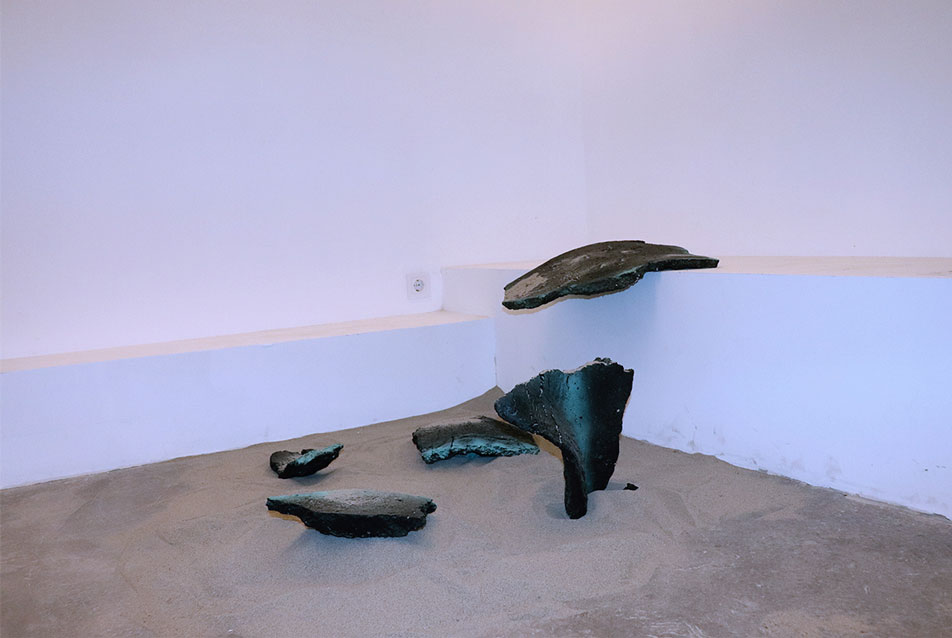
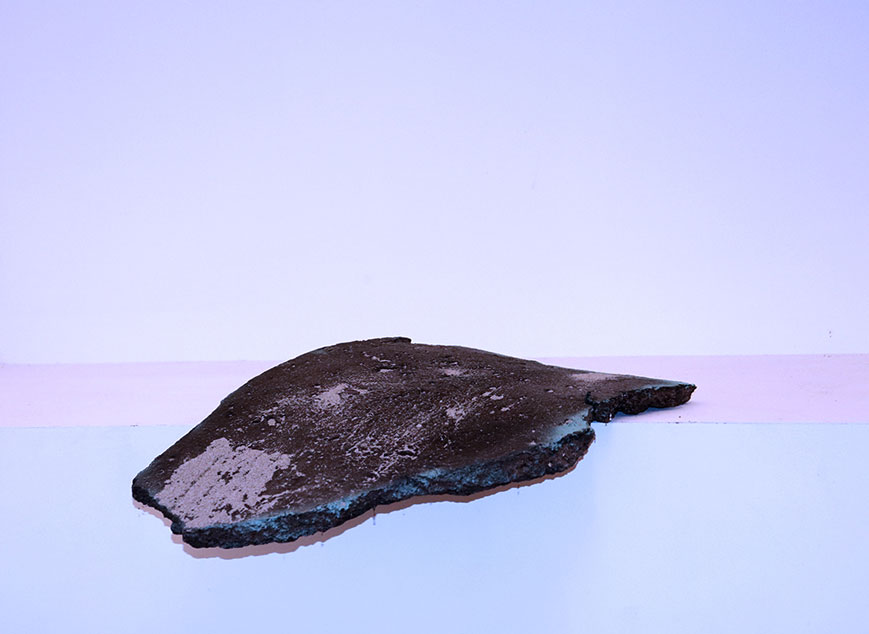
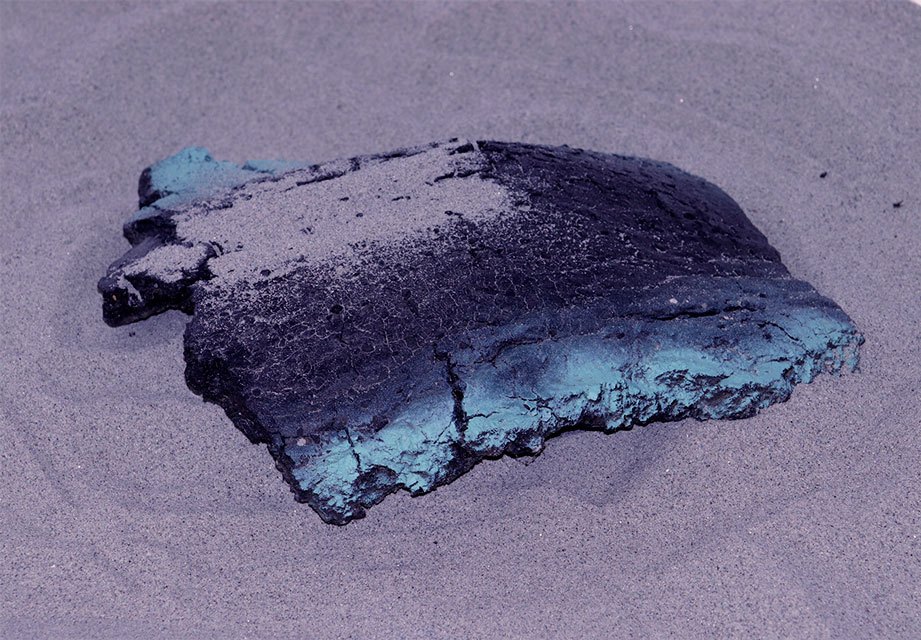
bitumen, paint, sand
Where I live the environment is usually under road construction and home of seemingly continuous train station recovery works. Day by day I recognized the beauty of the excavated asphalt fragments, which formed heaps in small pyramid sections. Some of them had an elegant wave in their structure so I decided to take a few home for further improvement. I put bitumens above different objects to get a fine wave as a result. I used the Sun to form them into greater shapes. I like to think that these objects are a cycle of the matter.
puzzle

Interactive installation, web project
Avoid taking a cliche sunset picture, you can create your own with these squares from Tihany
